Hairline-lowering surgery in Turkey is a highly effective procedure designed to reduce the height of the forehead by advancing the hairline, thereby improving facial balance and proportion. Whether addressing naturally high foreheads, hairline recession, or aesthetic concerns, our skilled Turkish surgeons use advanced techniques to achieve natural-looking, long-lasting results with minimal scarring. Combining world-class expertise with cost-effective options, Turkey has emerged as a top destination for hairline-lowering surgery. Enhance your harmony, rejuvenate your look, and boost your confidence with this transformative procedure in Turkey today!
Why the Forehead Area Matters
The forehead plays a central role in defining facial harmony and expression. A high or disproportionately large forehead can make the face appear unbalanced, draw attention away from the eyes, or create an aged or stern look. Since the forehead frames the upper face, its proportions influence how youthful, approachable, and symmetrical someone appears. In women, especially, a lower, naturally framed hairline is often associated with softness and femininity, while men may seek balance between the forehead and other facial features.
Because it is one of the first areas people notice, the forehead can strongly impact self-confidence. Subtle changes in its height and proportion can dramatically enhance overall attractiveness, bringing balance to the face and restoring harmony between the forehead, eyes, brows, and hairline.
Causes of a Large Forehead
Several factors can contribute to the appearance of a high or large forehead, and understanding these helps determine whether hairline lowering surgery is the right solution. Genetics is the most common cause—many people are simply born with a naturally high hairline that creates the impression of a larger forehead. Aging also plays a role, as hairlines tend to recede over time, especially in men, but also in women with thinning hair. Certain hairstyles or long-term hair practices, such as tight ponytails or braids, may gradually pull on the hairline, leading to traction alopecia and further heightening the forehead. Finally, some medical treatments or conditions that cause hair loss can contribute to a more prominent forehead.
A large forehead is not always a medical concern, but for many, it can affect facial balance and self-confidence. Identifying the cause is the first step in choosing the most effective corrective treatment.

Techniques of Hairline Lowering Surgery
Several surgical approaches can be used to reduce the height of the forehead, depending on the patient’s anatomy, hair type, and desired outcome:
- Direct Hairline Advancement (Forehead Reduction Surgery):
Involves making an incision along the natural hairline and advancing it forward to lower the forehead. This provides immediate results and is especially effective for patients with good scalp flexibility. - Tissue Expansion Method:
A balloon-like device is inserted under the scalp weeks before surgery and gradually inflated to stretch the skin. This extra skin allows for greater advancement of the hairline with less tension, making it ideal for patients with tight scalps. - Hair Grafting (Hair Transplantation):
Individual hair follicles are transplanted from the donor area (usually the back of the head) to the forehead, creating a naturally lower hairline. While results take longer to appear, this technique works well for patients with limited scalp mobility or those seeking a softer, more natural hairline shape. - Combined Approach:
In some cases, surgeons combine hairline advancement with hair transplantation to achieve both significant lowering and refined density, ensuring natural coverage around the new hairline.
Each technique has its own advantages, and the choice depends on scalp laxity, hair characteristics, and personal aesthetic goals.
Procedure
Before The Operation
The operation is done under general anesthesia. Forehead reduction surgery may be done in conjunction with other cosmetic procedures. For example, to achieve a more harmonious facial appearance, the fox eye lift surgery creates an elegant upward tilt to the eyes, enhancing the upper facial area.
The surgeon will perform appropriate medical examinations and blood tests before the operation.
The patient’s hair should be long enough to cover the scars during the recovery period.
During The Operation
The surgeon begins by marking the surgical plan, then makes a carefully irregular incision along the hairline to avoid creating a straight, visible scar. The excess forehead skin is removed at the hairline, and the scalp is gently advanced from the back of the head forward to the desired position. In most cases, an advancement of 1–1.5 cm can be achieved safely without complications. Finally, the scalp is secured to the bone using bioabsorbable fixation materials, which naturally dissolve over time.
After The Operation
It is important to carefully follow your doctor’s instructions to keep the surgical incision clean and promote proper healing. Most patients are able to leave the hospital just a few hours after the procedure. About a week later, the surgical stitches are removed, and periodic follow-ups are scheduled over the following four weeks to monitor recovery. Around six weeks after surgery, hair growth begins along the scar line, gradually concealing it until it becomes almost invisible.
Who is a Good Candidate for a Forehead Reduction Surgery?
In general, a good candidate for a forehead reduction is:
- a person with a high hairline who wants to make it smaller
- a person with inherited conditions
- a person with furrowed lines above the nose or droopy eyebrows
- a person with low or heavy eyebrows who wants to change them
Male Forehead Reduction
The forehead reduction technique is suitable for male patients as well. However, because of the typical male hair loss pattern, it is a little more challenging. Men with high hairlines often feel self-conscious about their appearance, as a larger forehead can sometimes create the impression of baldness. For this reason, many men consider a forehead reduction procedure to achieve a lower, more proportionate hairline. In some cases, however, a hair transplant may also be an effective solution for lowering the hairline and improving overall balance. If you are considering a male hairline reduction, it is important to evaluate all available options and consult with a qualified surgeon to determine the best approach for your individual needs. For those experiencing male pattern baldness, exploring hair transplantation or seeking professional guidance from one of our doctors can provide clarity and direction.
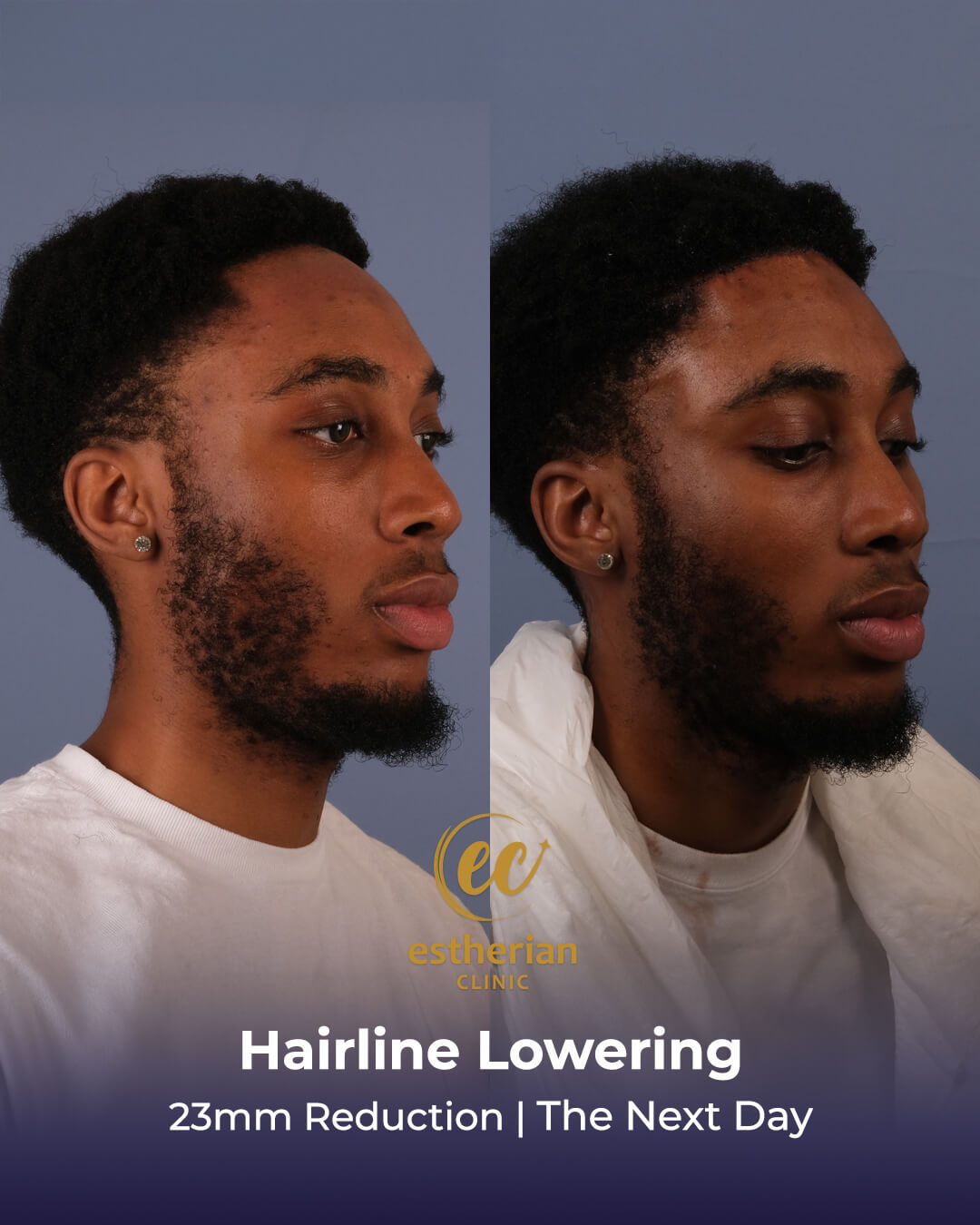
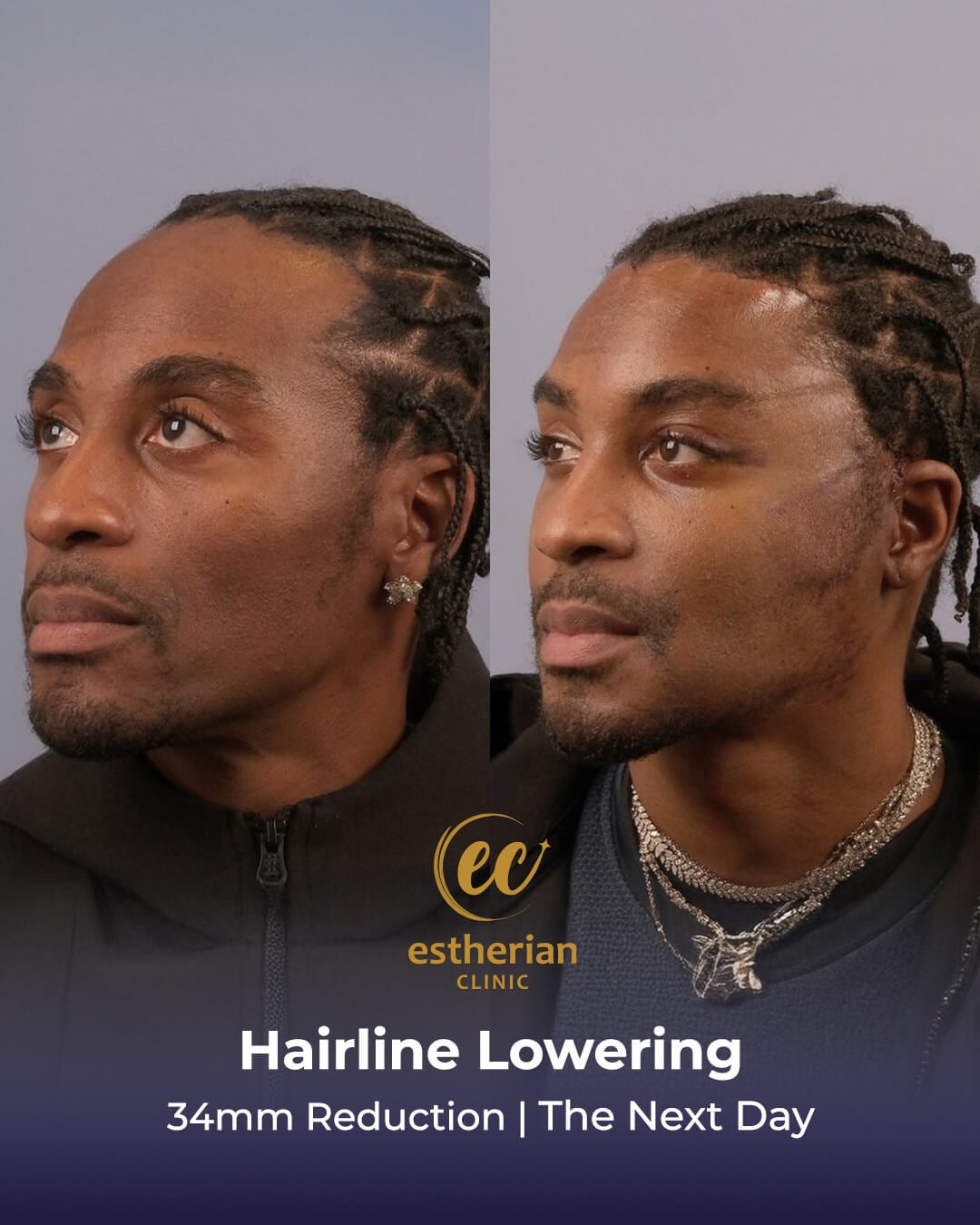
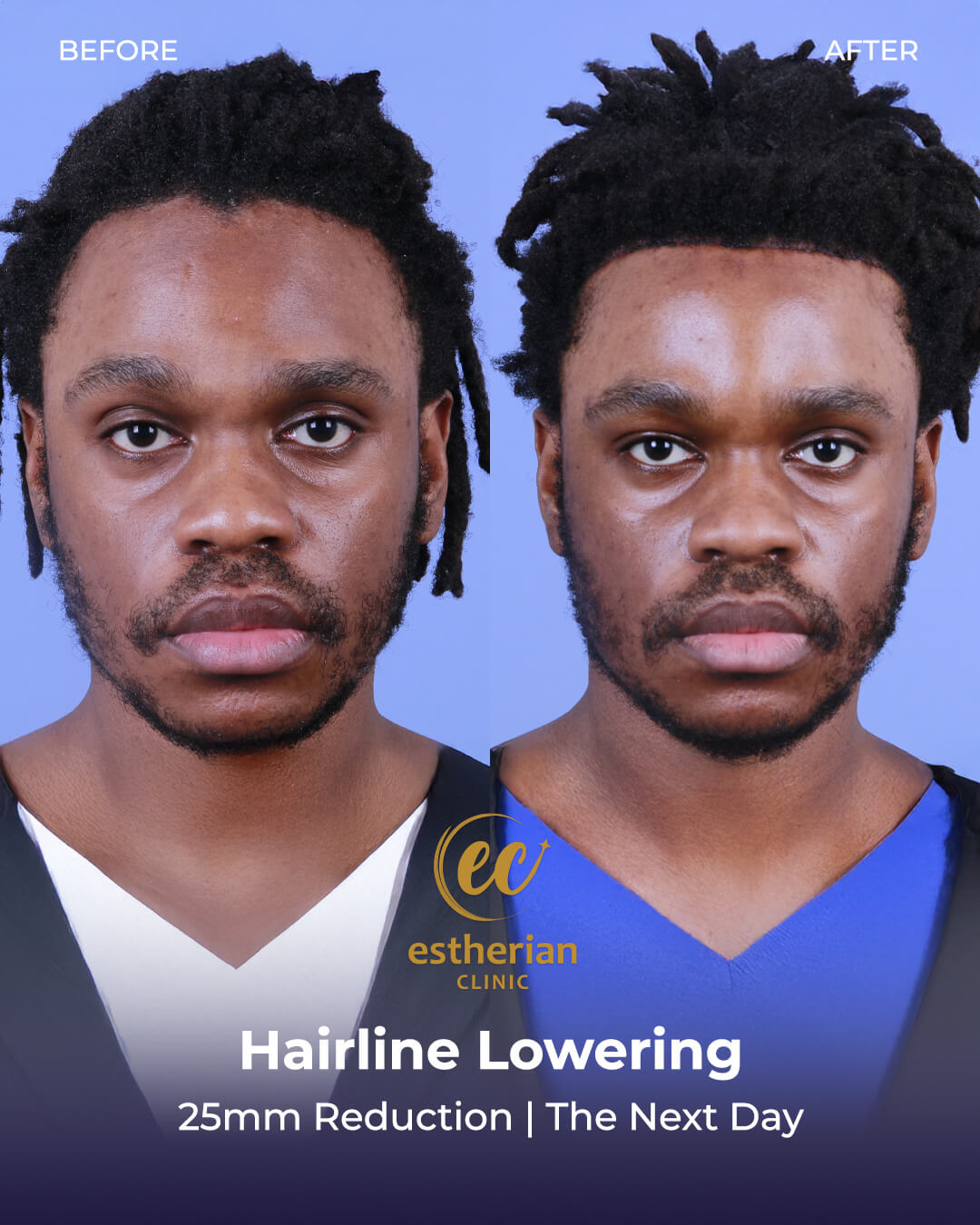
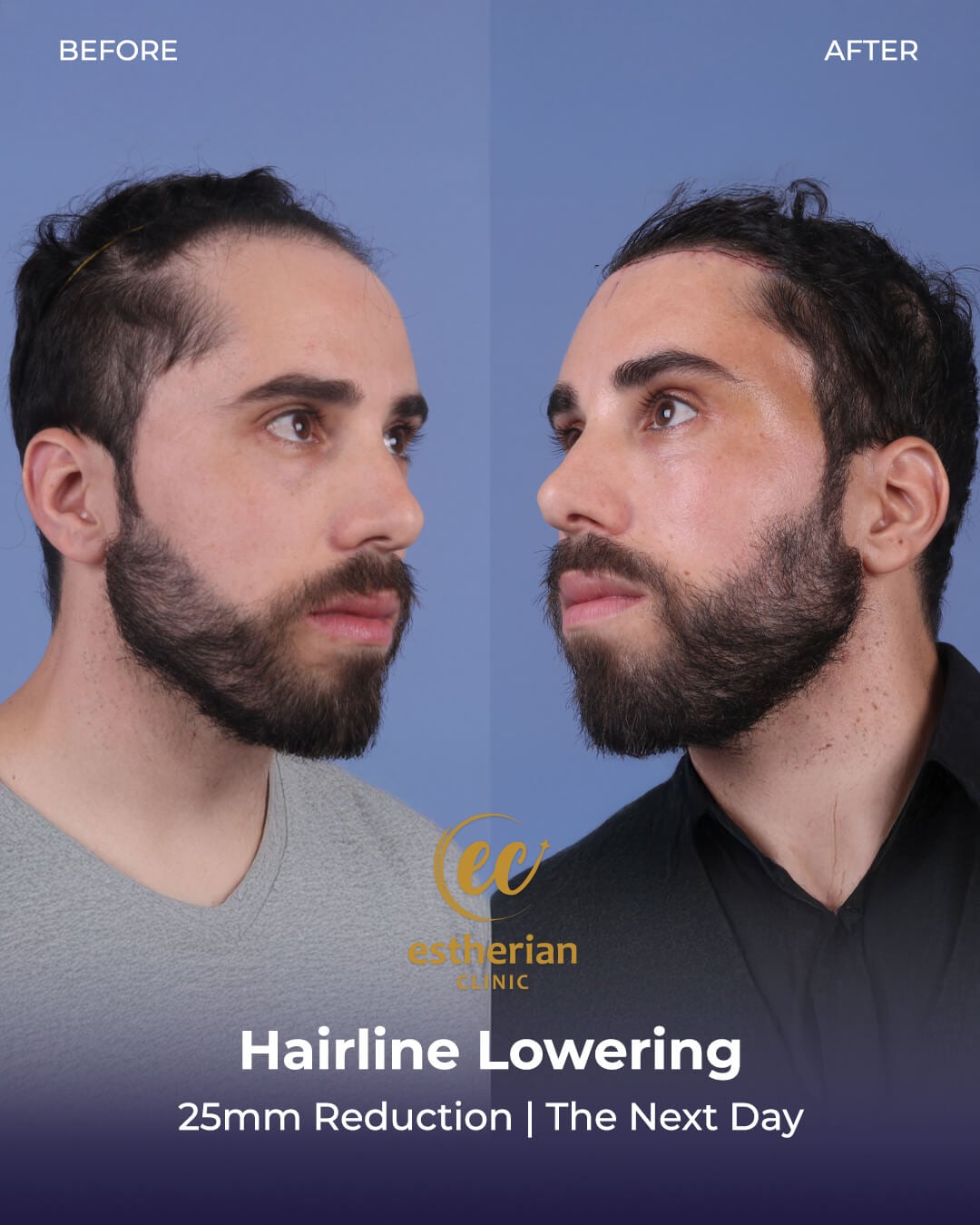
Female Forehead Reduction
Procedures to reduce the hairline are particularly common among young women.
Many women consider getting a hair transplant to lower their hairline. They may also think about forehead reduction surgery, since a high hairline can affect the symmetry of their face. These procedures offer a more aesthetically pleasing and harmonious appearance.
Due to their higher hair density around the hairline, women make excellent candidates for the forehead reduction surgery. This therapy can be very helpful for women who do not have severe or genetic hair loss.
Surgery to reduce the size of the forehead is more expensive and complex than a hair transplant. You might wish to think about female hair transplant procedures at Estherian Clinic if you wish to decrease your hairline.
Recovery time
- You can expect a pretty quick recovery period from the hairline-lowering surgery, and you can often return to your place of residence within a few hours following the procedure.
- After the hairline operation, you must go back to the clinic for the sutures to be removed. After the procedure is over, you will be requested to follow up with your doctor for the latest updates on the healing process.
- As with any procedure requiring an incision, you must ensure that the site is kept clean and given time to recover.
- Your surgeon and attendants will see to it that you have all the information and guidance you require for aftercare. This explains how to properly maintain your new hairline going forward.
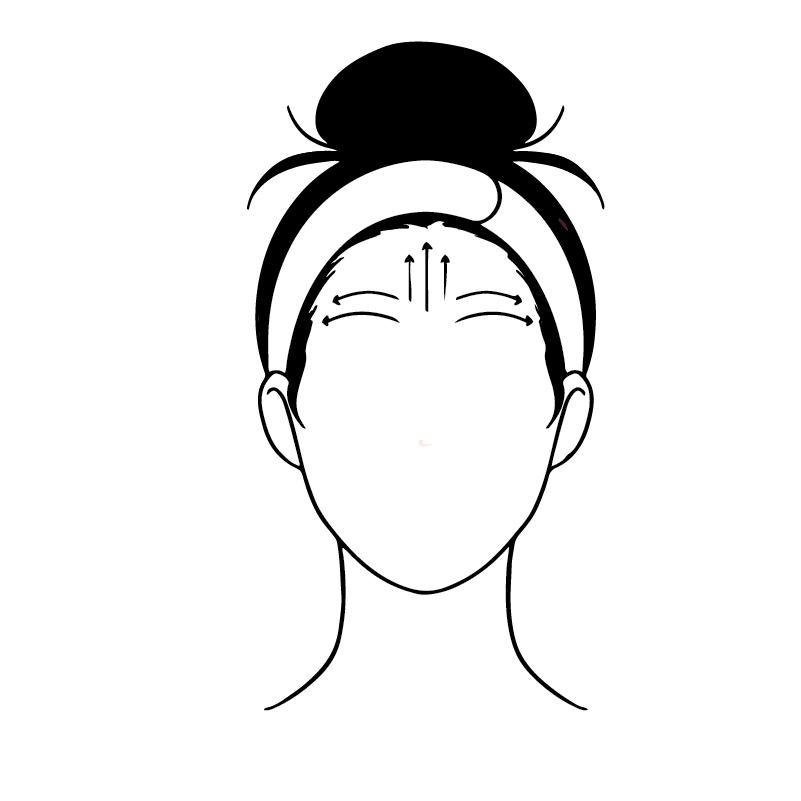
What are the Benefits of the Operation?
Undergoing hairline lowering surgery offers both cosmetic and psychological advantages that can make a meaningful difference in a patient’s life.
- Enhanced Facial Balance: By reducing the size of the forehead, the procedure creates more proportional features and restores harmony between the hairline, eyebrows, and other facial elements.
- Immediate and Noticeable Results: Unlike non-surgical alternatives, hairline lowering delivers visible improvement right after recovery, with long-lasting effects.
- Boost in Confidence: Many patients report increased self-esteem and comfort in social and professional interactions, as their appearance better reflects how they feel inside.
- Natural Appearance: Skilled surgeons ensure that the incision blends seamlessly with the natural hairline, leaving minimal to no visible scarring.
- Personalized Outcomes: The procedure can be tailored to individual goals, whether the aim is a subtle change or a more dramatic reduction of forehead height.
This operation is not only about aesthetics but also about improving how patients feel about themselves on a daily basis.
What are the Risks of the Operation?
Like any surgical procedure, hairline lowering comes with potential risks that patients should carefully consider before making a decision.
- Scarring: Although surgeons place incisions along the natural hairline to minimize visibility, some patients may still experience noticeable scarring.
- Hair Loss Around the Incision: Temporary or, in rare cases, permanent hair thinning near the incision line can occur.
- Asymmetry: There may be slight unevenness in the hairline, though this is usually correctable.
- Numbness or Sensitivity Changes: Patients may feel numbness or tingling around the forehead or scalp, which often improves over time but can persist.
- General Surgical Risks: As with all surgeries, there is a small risk of infection, bleeding, or unfavorable healing.
While these risks exist, choosing an experienced surgeon and following post-operative care instructions greatly reduces the chances of complications.
Frequently Asked Questions (FAQs)
Does the forehead reduction surgery leave scars?
Surgery for forehead reduction requires making an incision; thus, a transient, tiny scar will be visible along the new hairline. After the surgery, the scarring is pink and sensitive for some time. But because hair grows along the incision, the scar is typically almost entirely hidden. Following the aftercare instructions, staying out of the sun, moisturizing the incision area, and avoiding infection will all help to minimize scarring.
The extent of scarring depends on your surgeon’s skill and how cautious you are after the procedure.
Our doctors in Estherian Clinic are experts in female hair transplant, afro-textured hair transplant, and forehead reduction surgery.
Is it safe?
Surgery to lower the hairline is typically regarded as a safe procedure. However, it carries some dangers, like mild bleeding, numbness, infection, scars, and swelling, much like any other operation.
Make sure you are receiving care in a clinic with the necessary credentials and experience, and rigorously adhere to your surgeon’s instructions to prevent any issues before, during, or after your surgery.
During your consultation, consider the surgeon’s years of experience. Look for photos of clients before and after surgery. Check for post-operative services and read reviews on social media.
Here at Estherian Clinic we offer you Dr. Cengizhan Ekizceli , the doctor has 13 years experience in Forehead operations and plastic surgery.
Is the Forehead Reduction Surgery Painful?
There will be no pain during the operation because it will be performed under general anesthesia.
Is the Forehead Reduction Surgery Permanent?
The results of a forehead reduction procedure are permanent.
Does the Forehead Reduction Surgery Leave a Scar?
The scars will be temporary as they disappear over time.
Can Your Forehead Get Smaller With Surgery?
Usually, the forehead is reduced by 1 to 1.5 cm.
Hairline Lowering in Turkey: Before and After
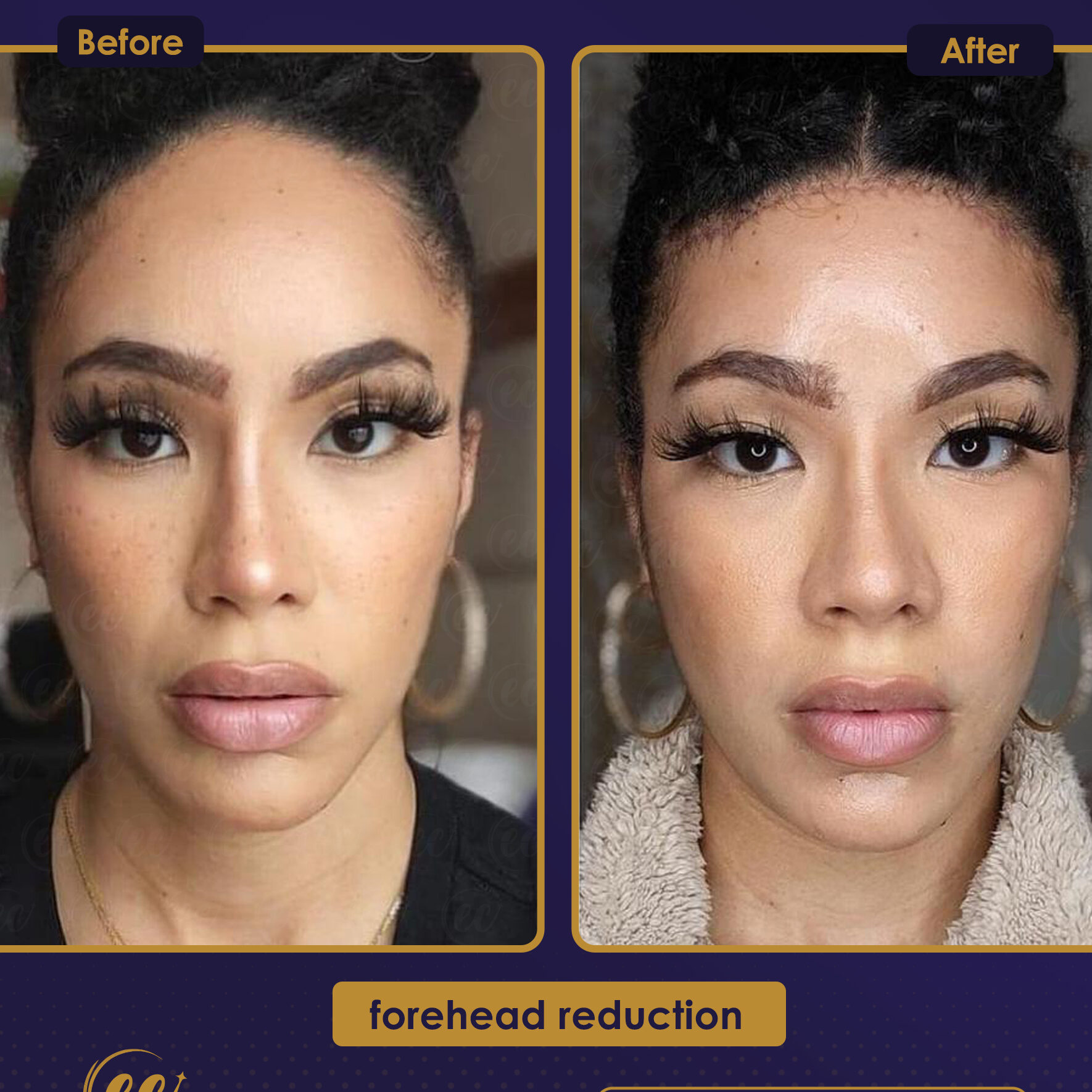
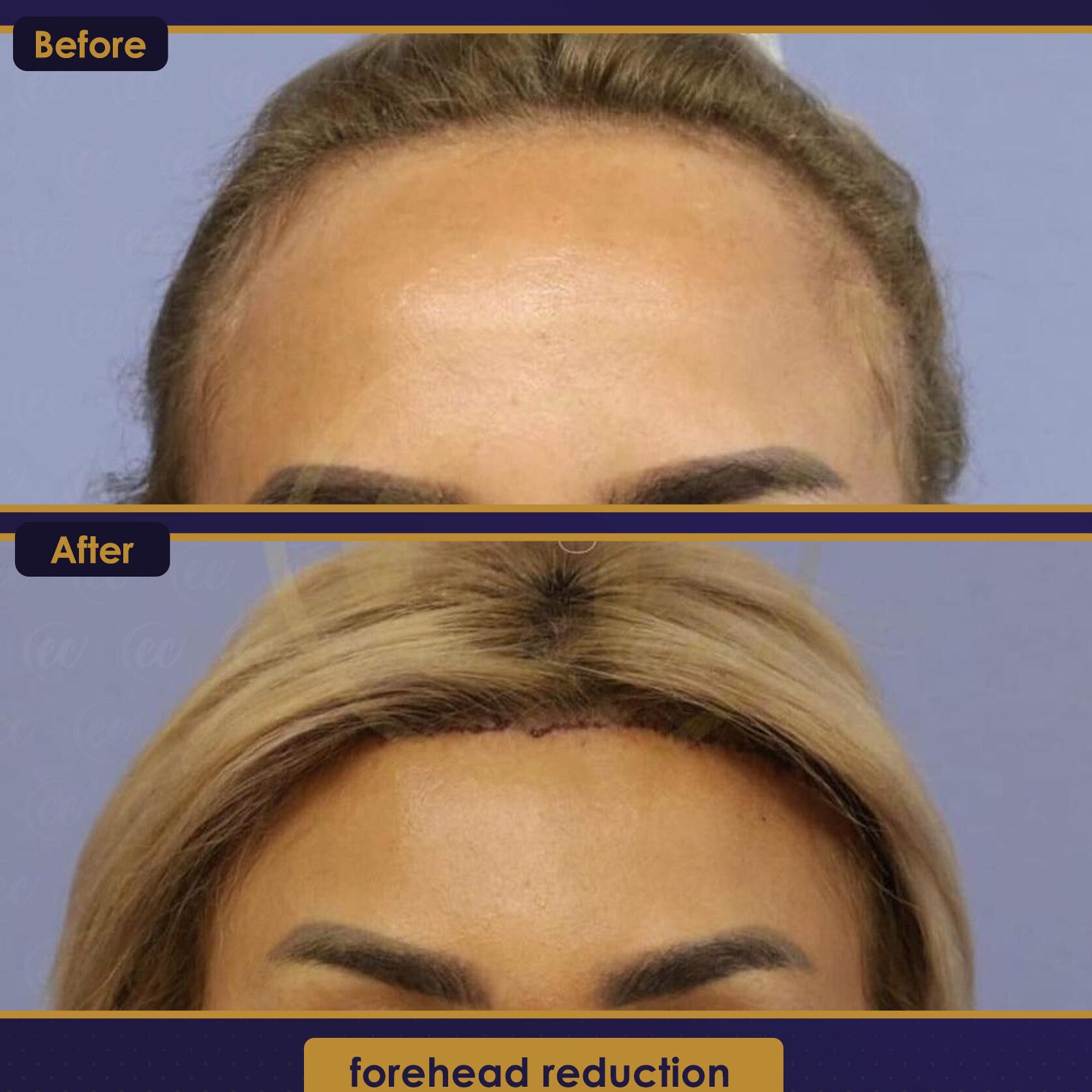
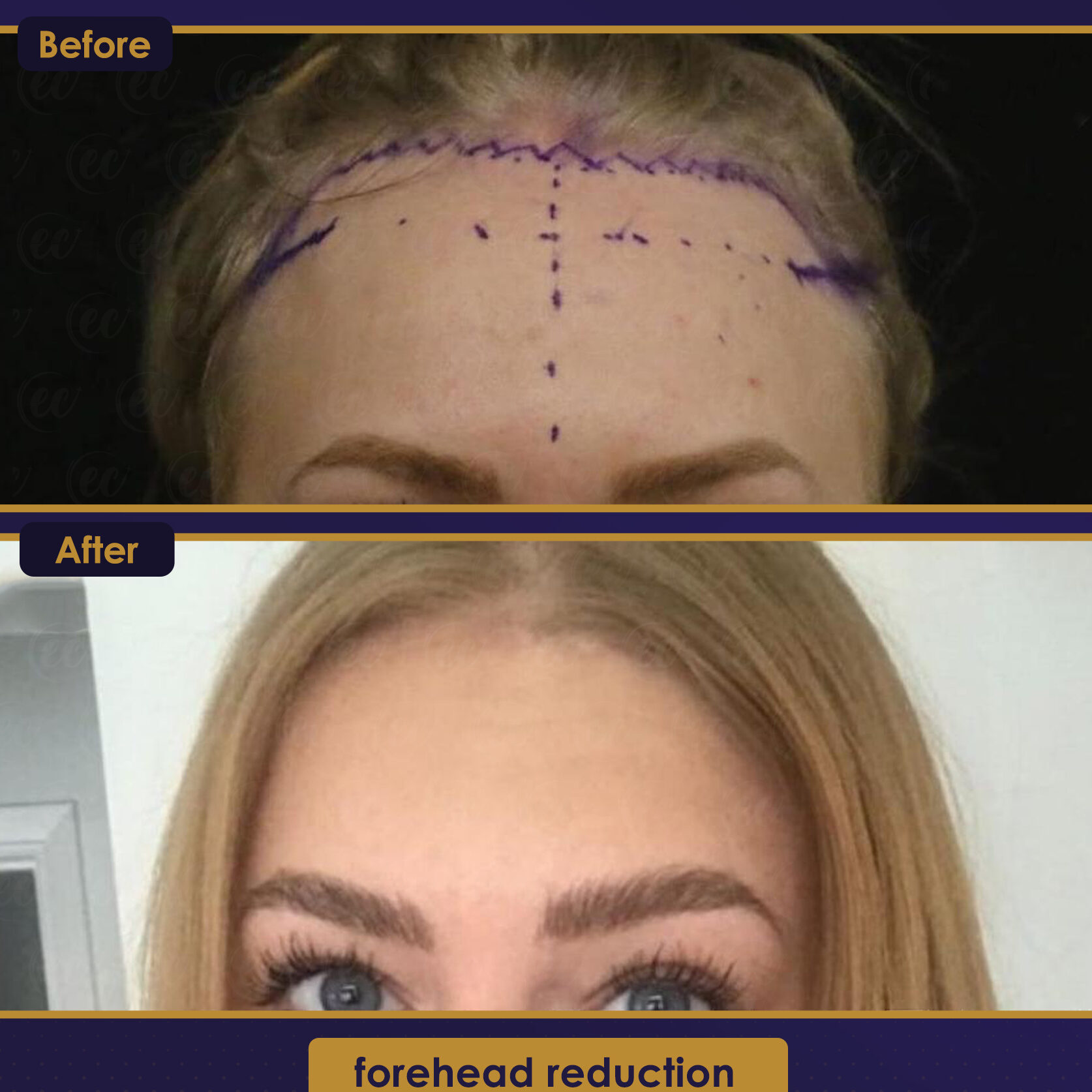
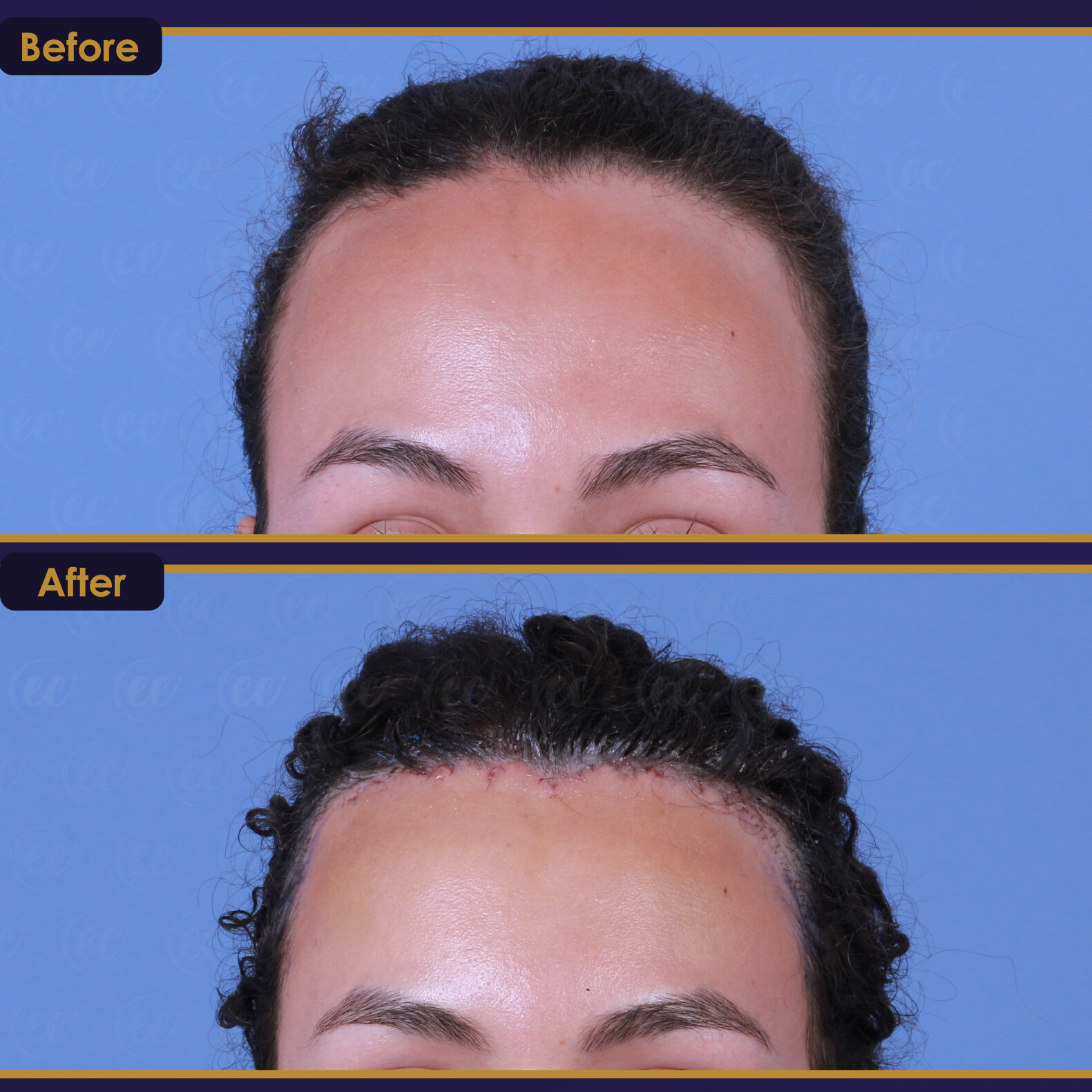
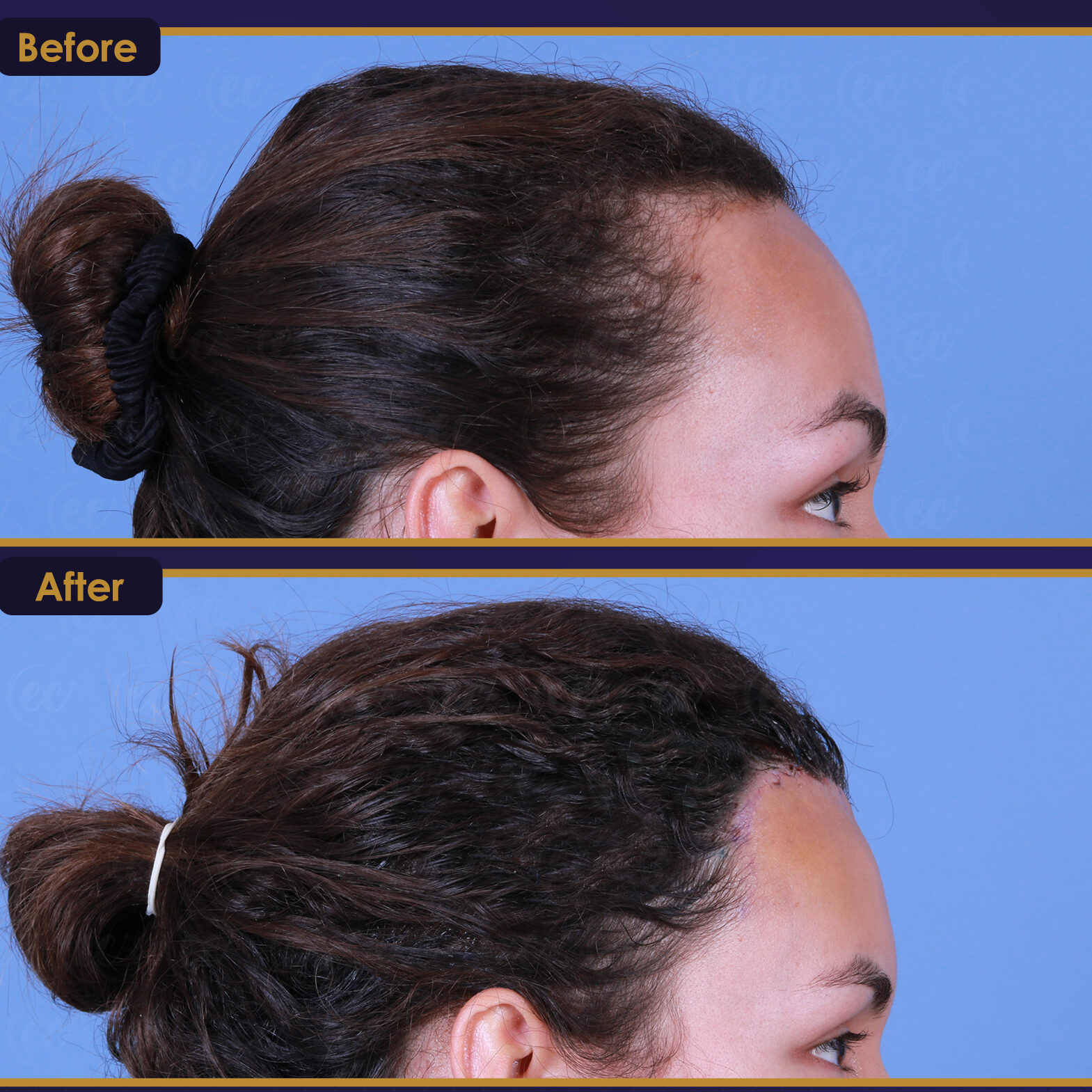
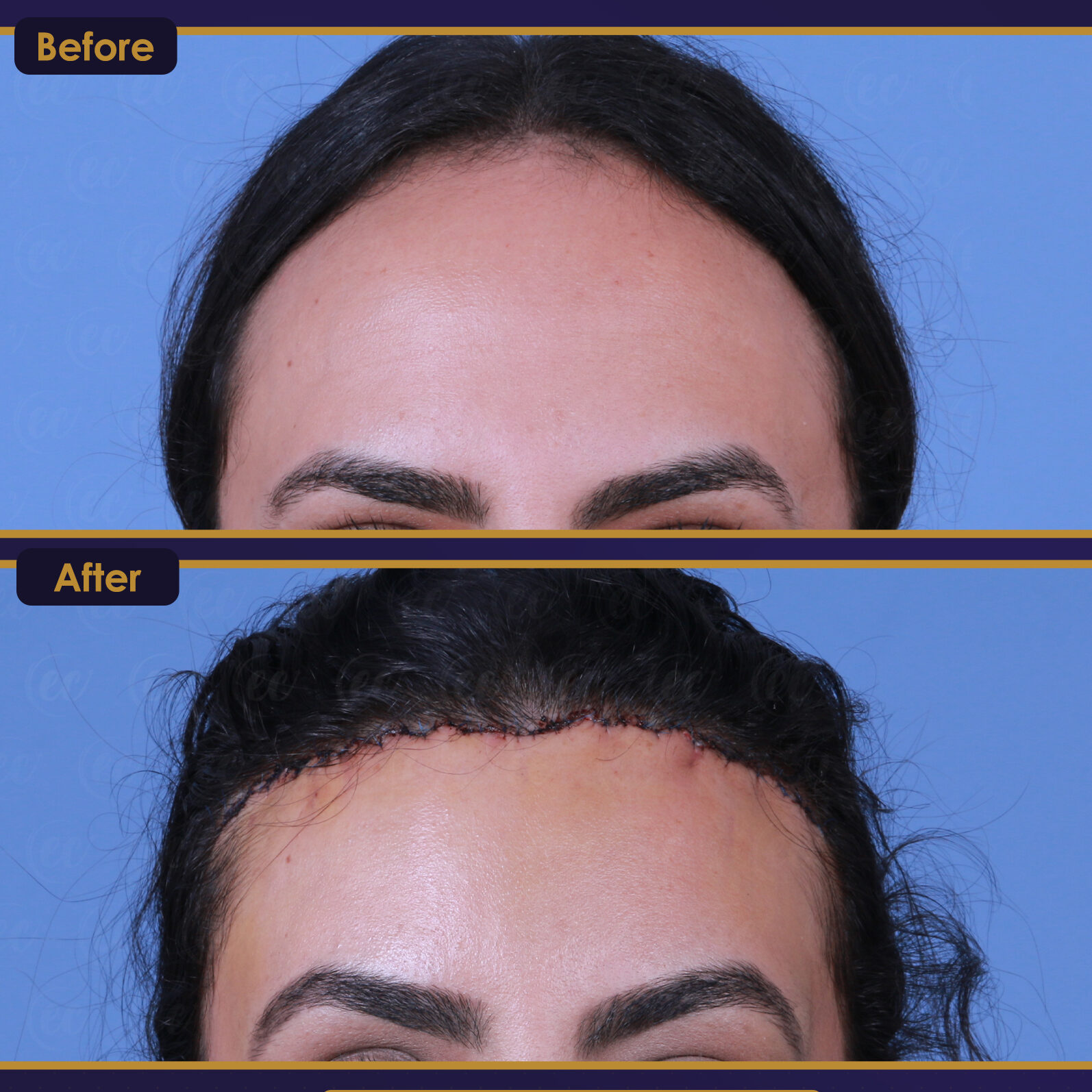
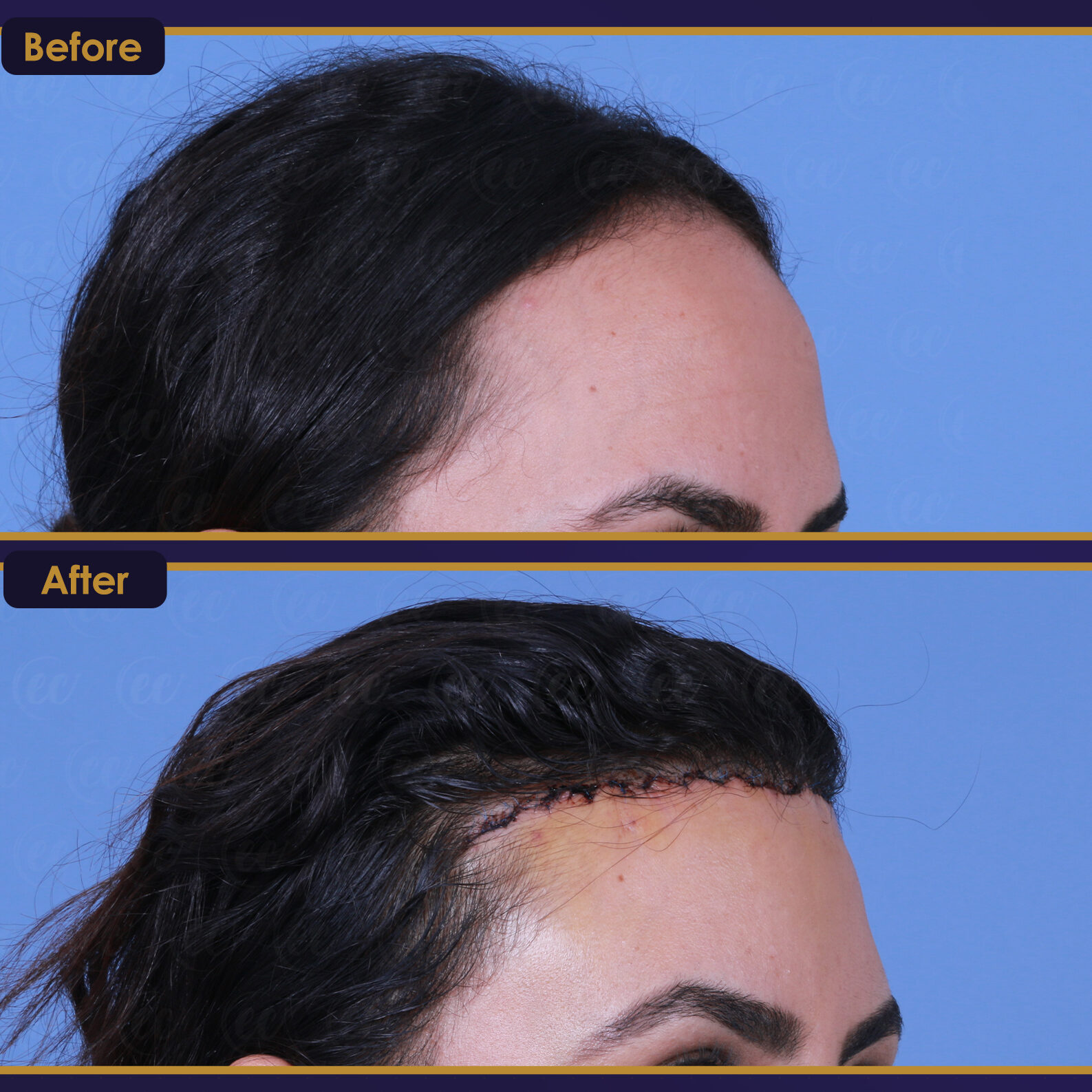
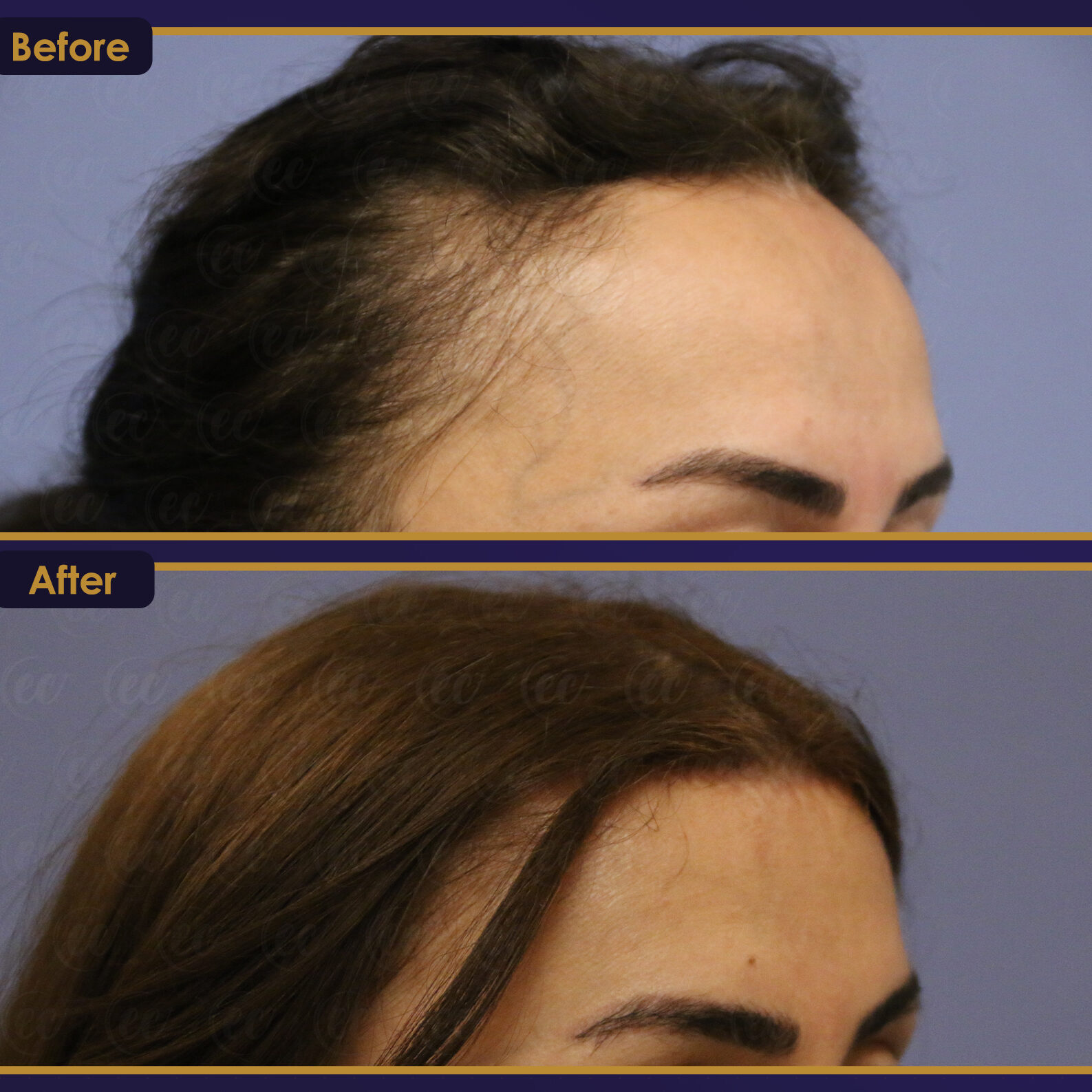
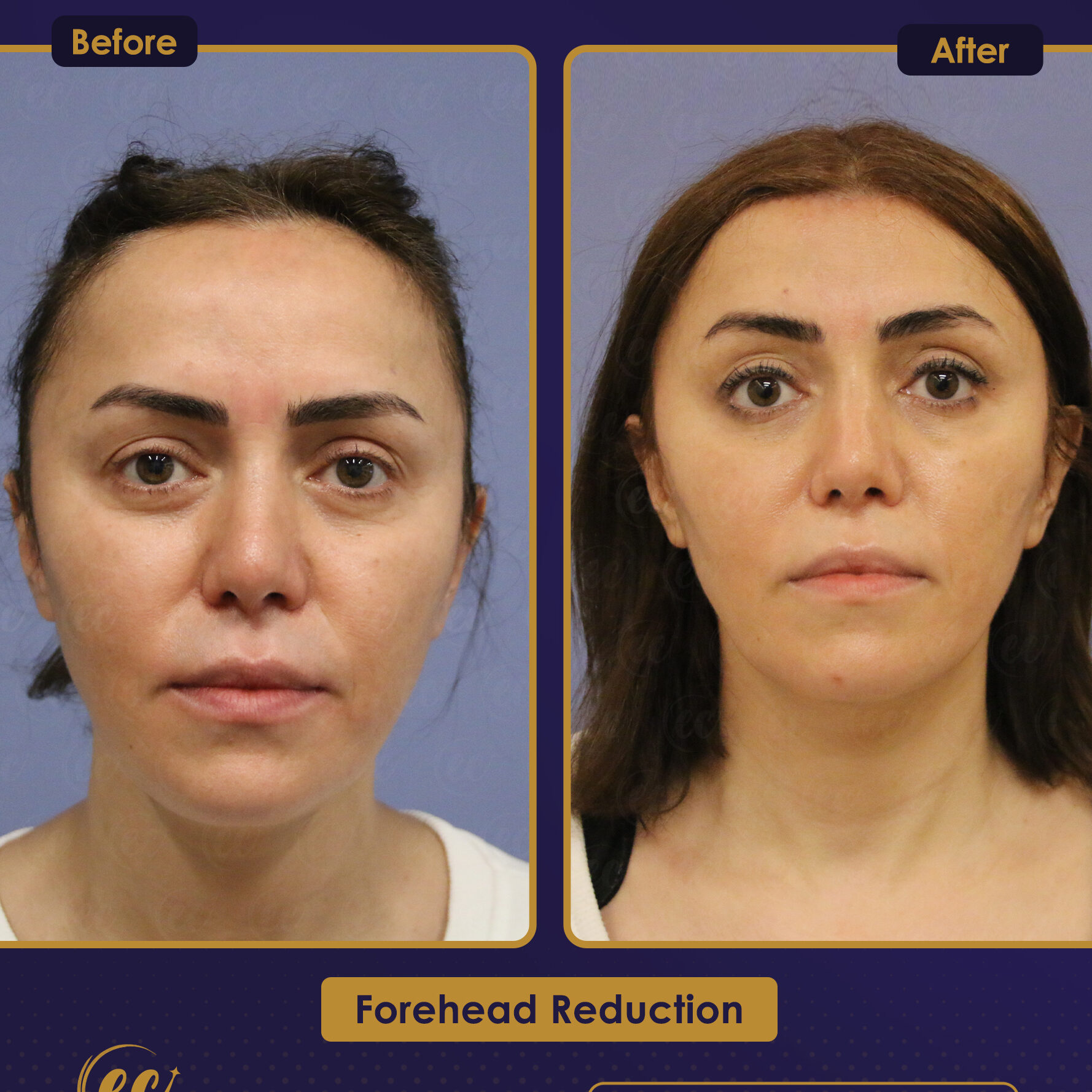
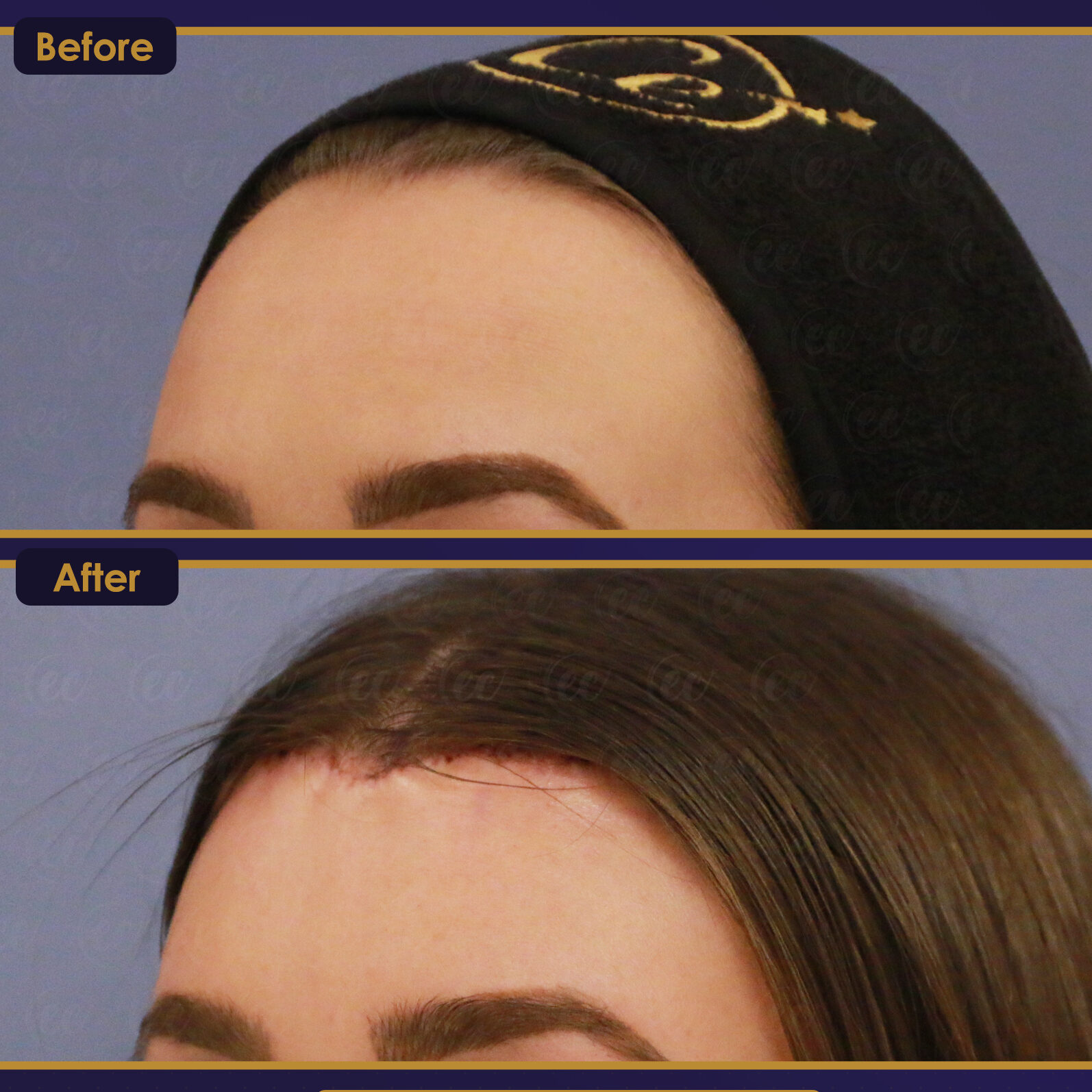
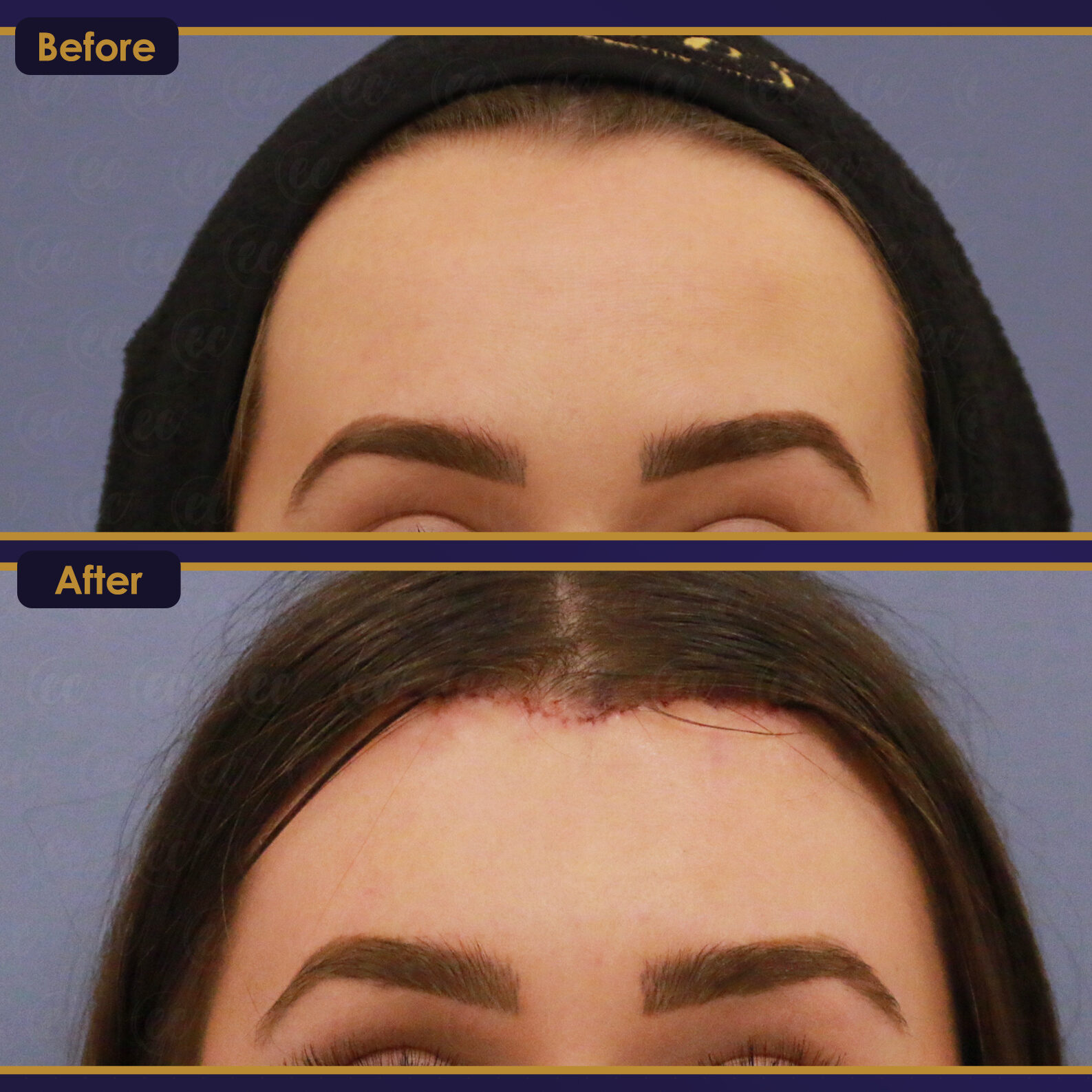
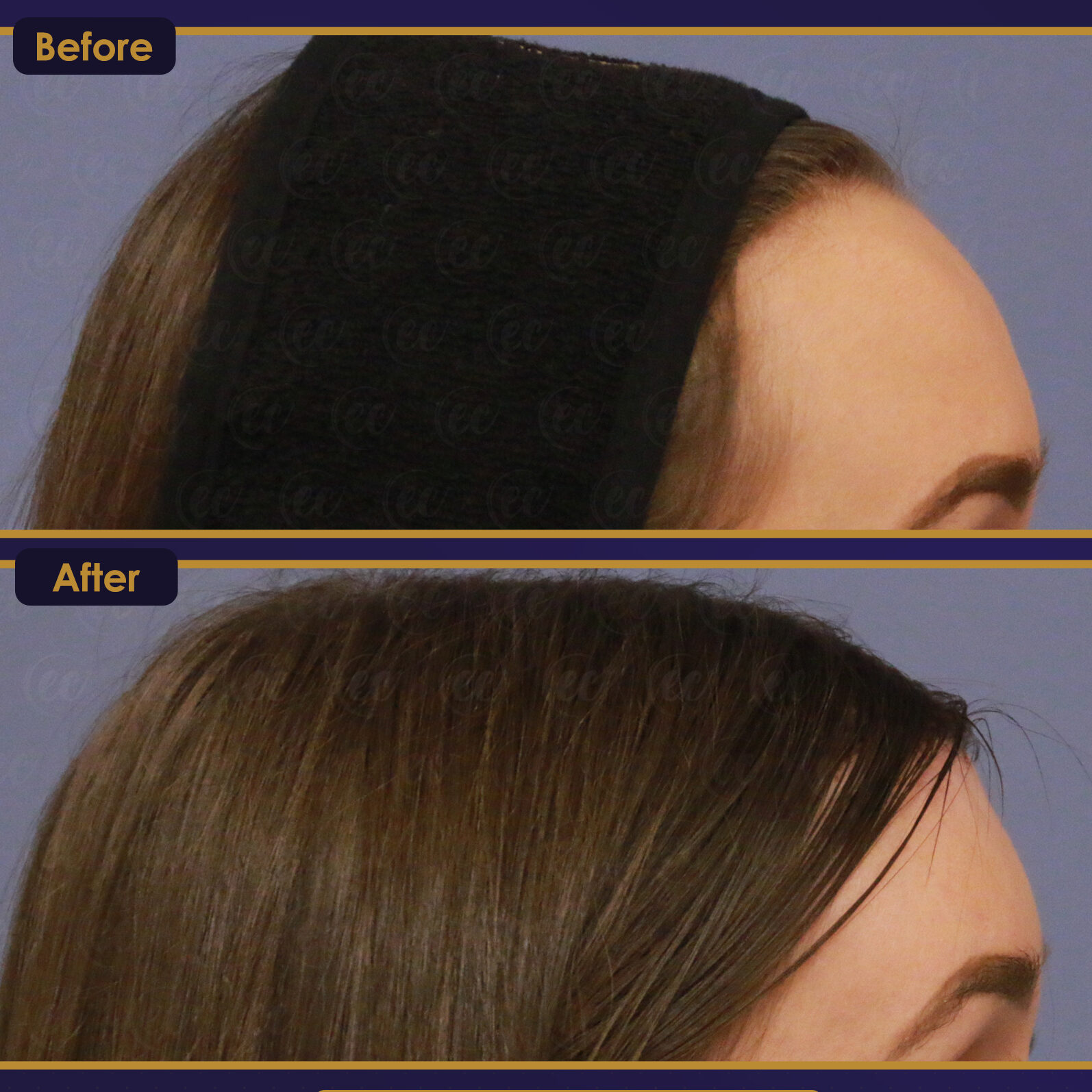
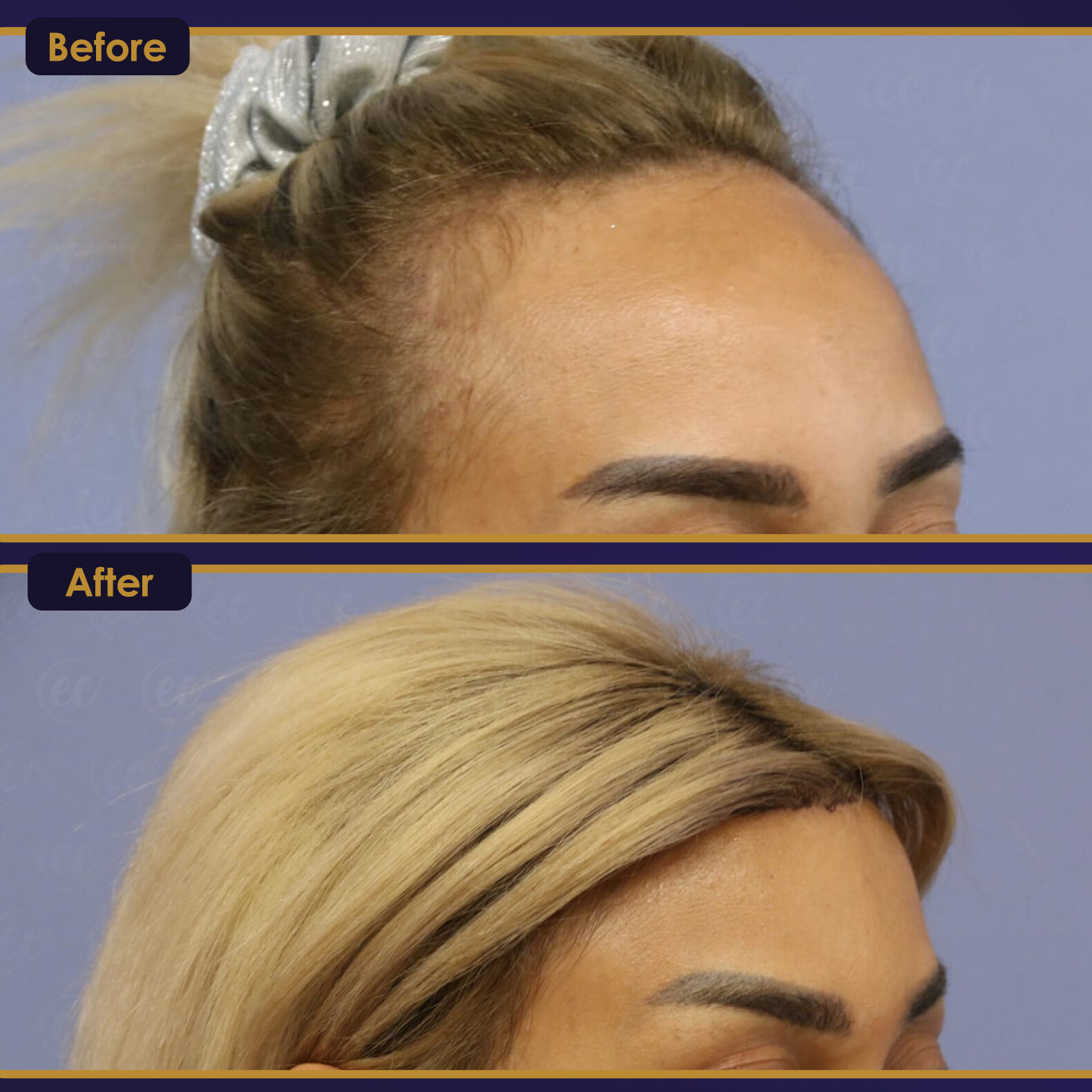
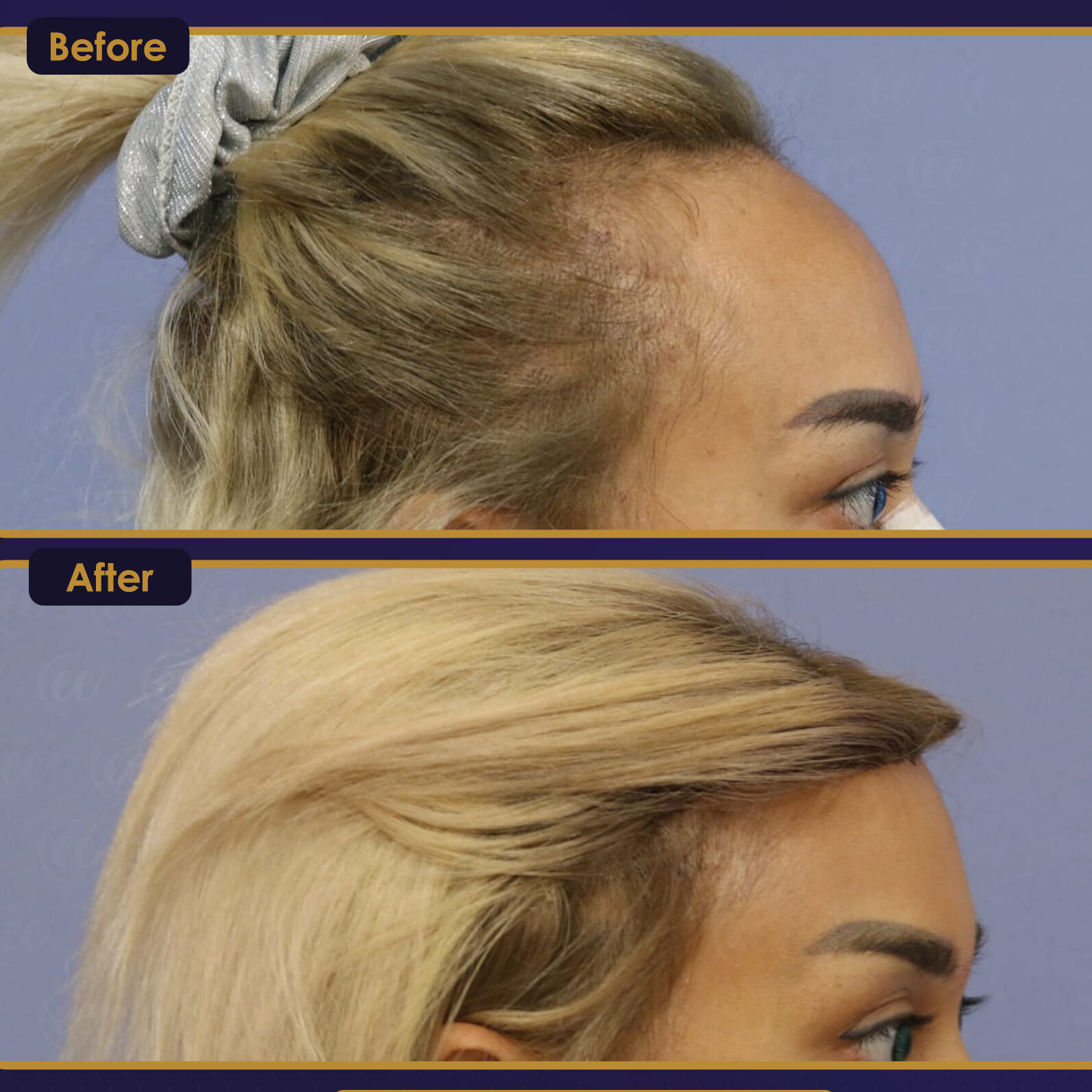
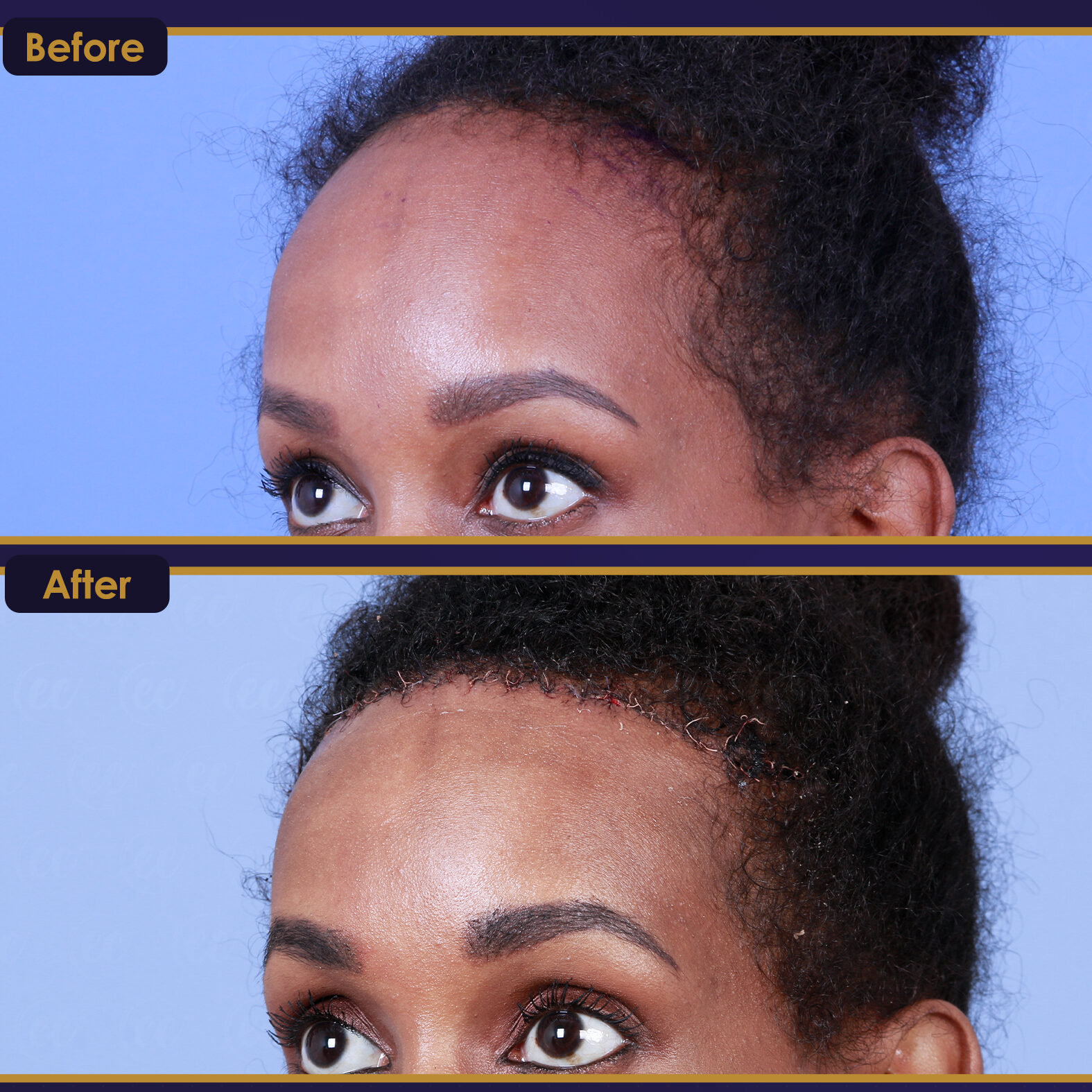
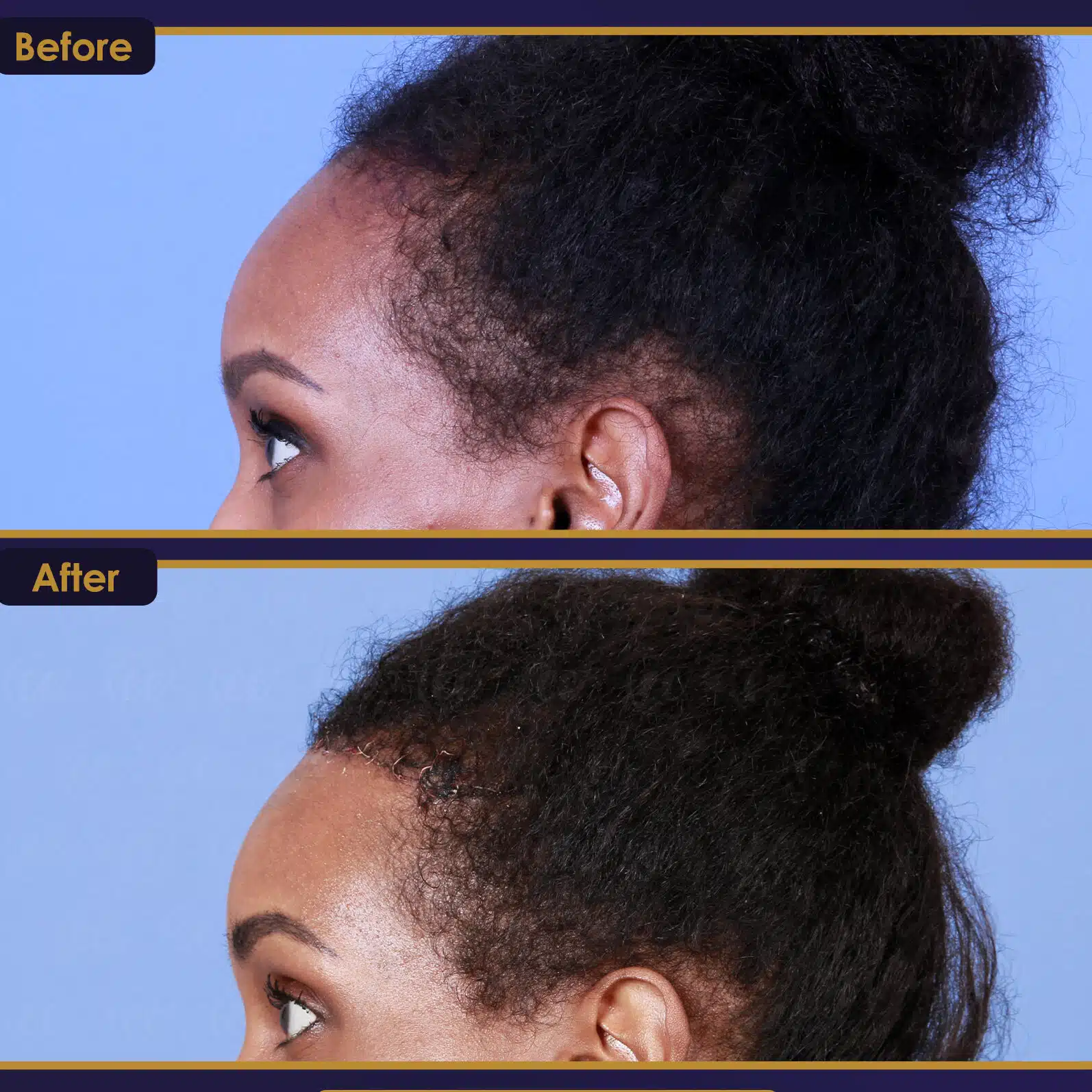
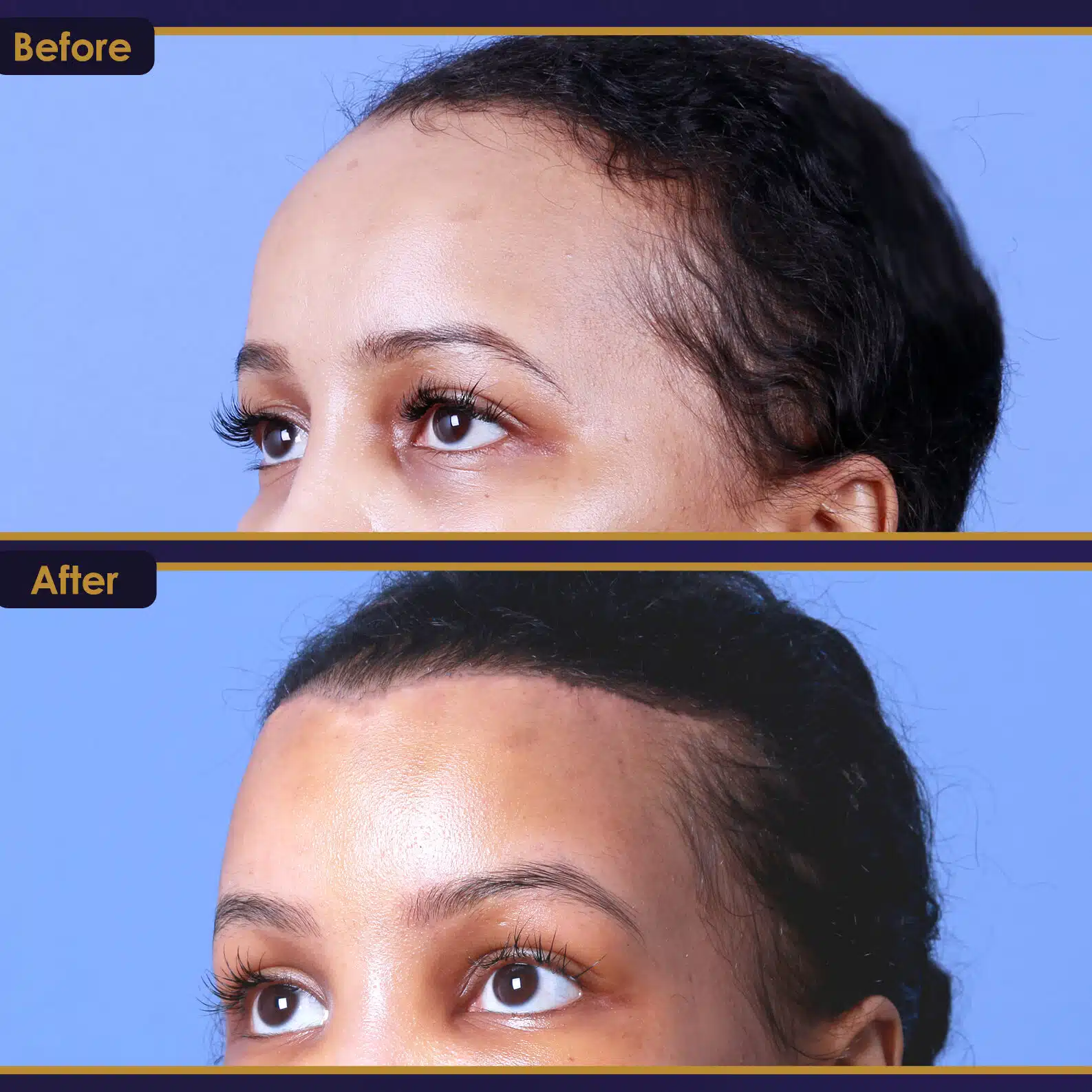
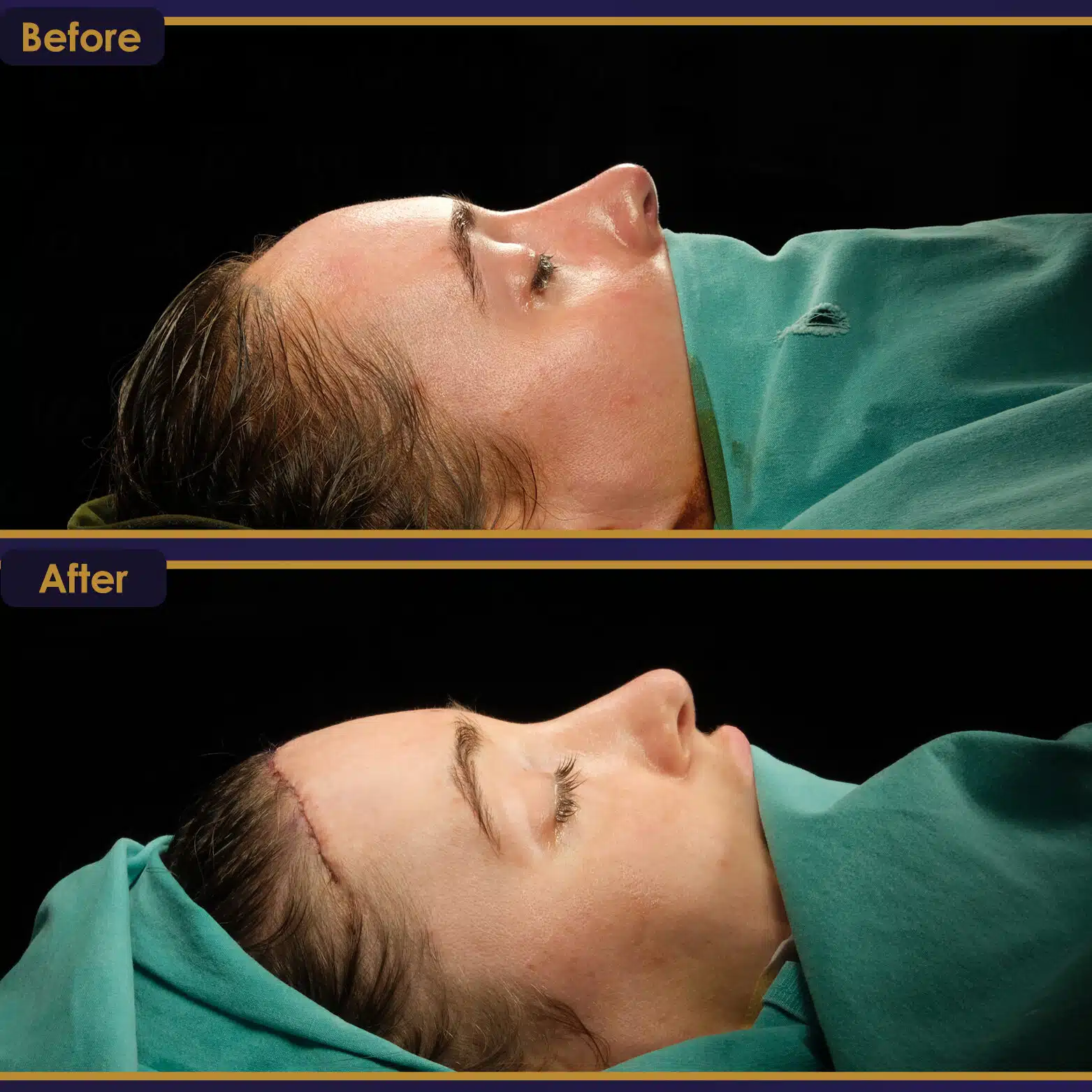
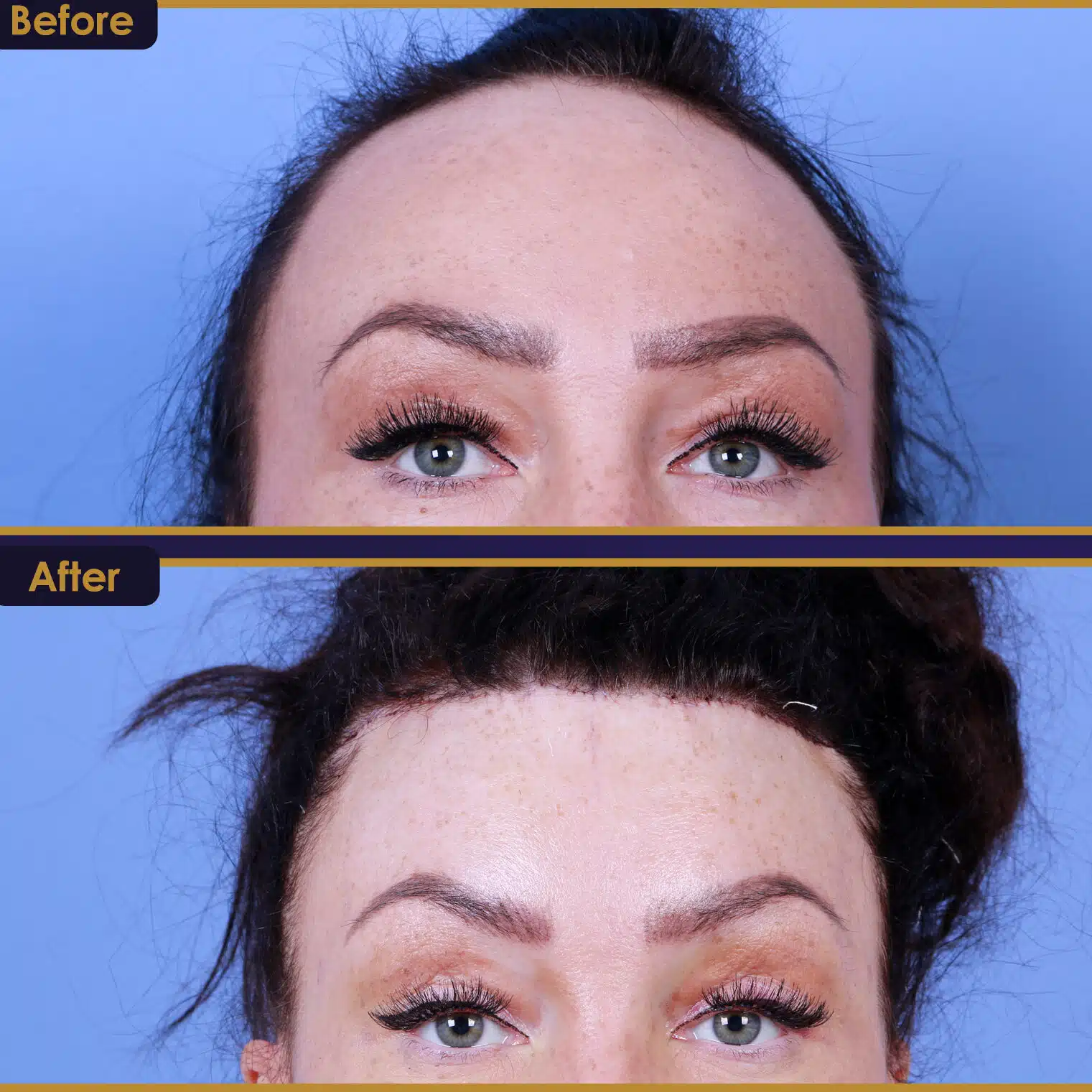
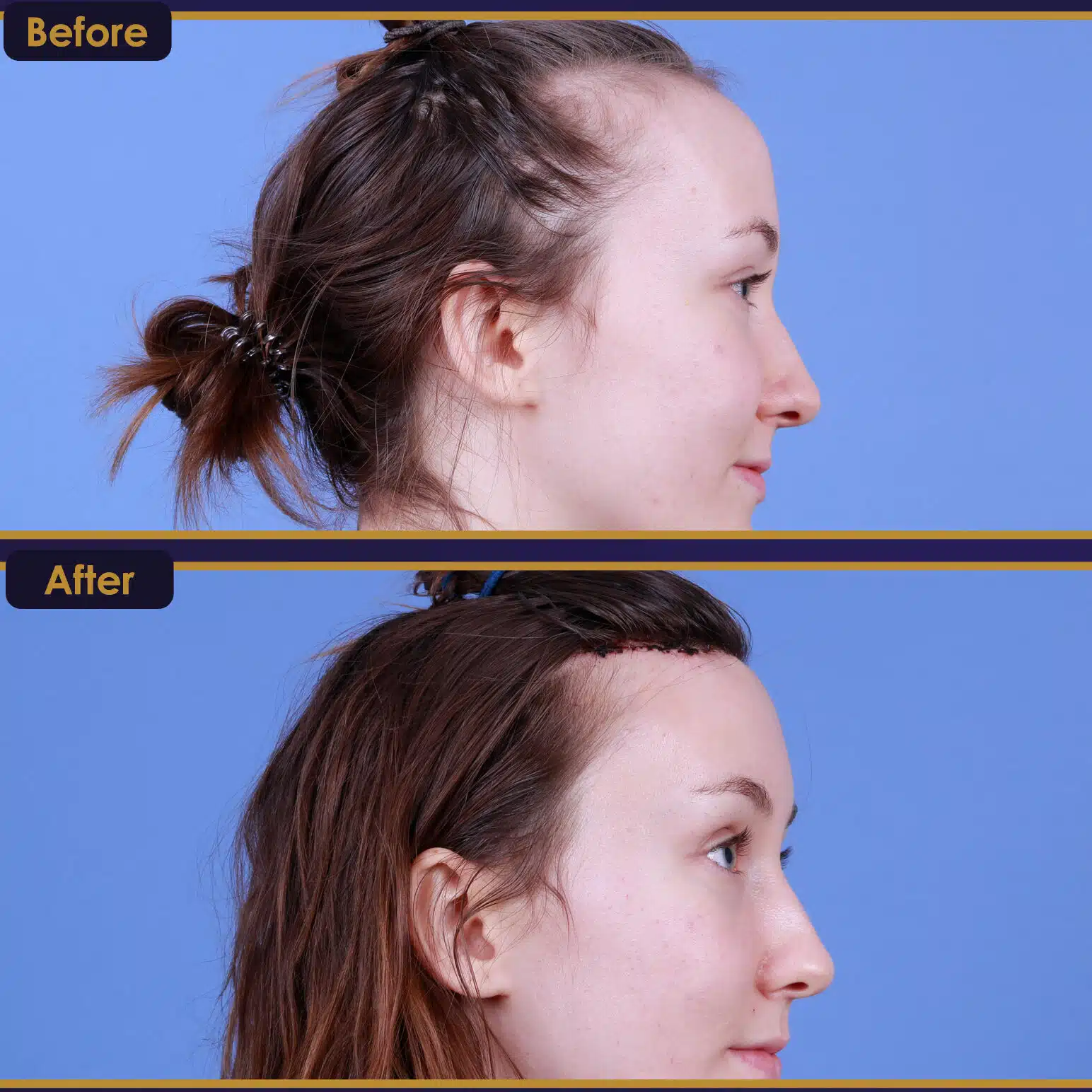
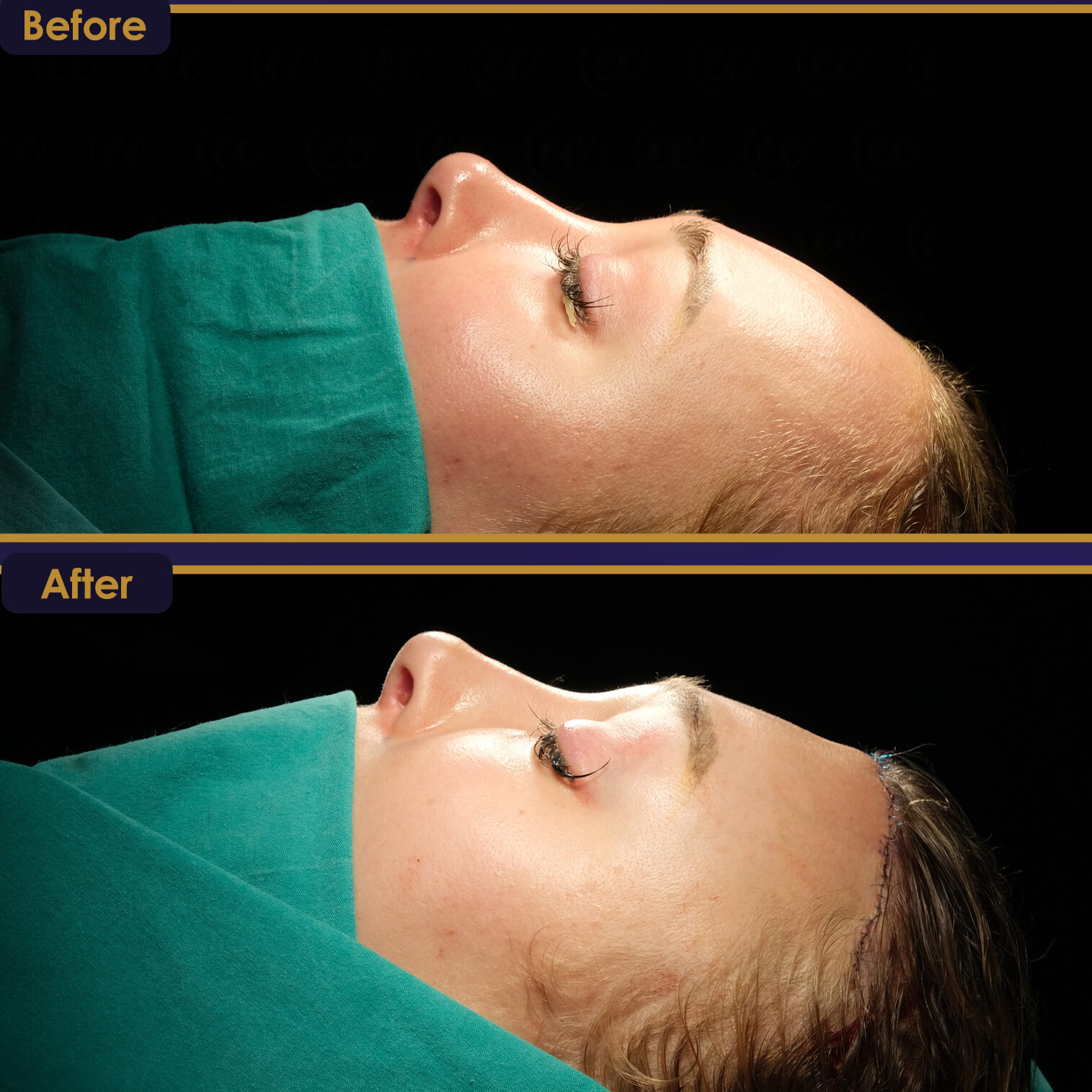
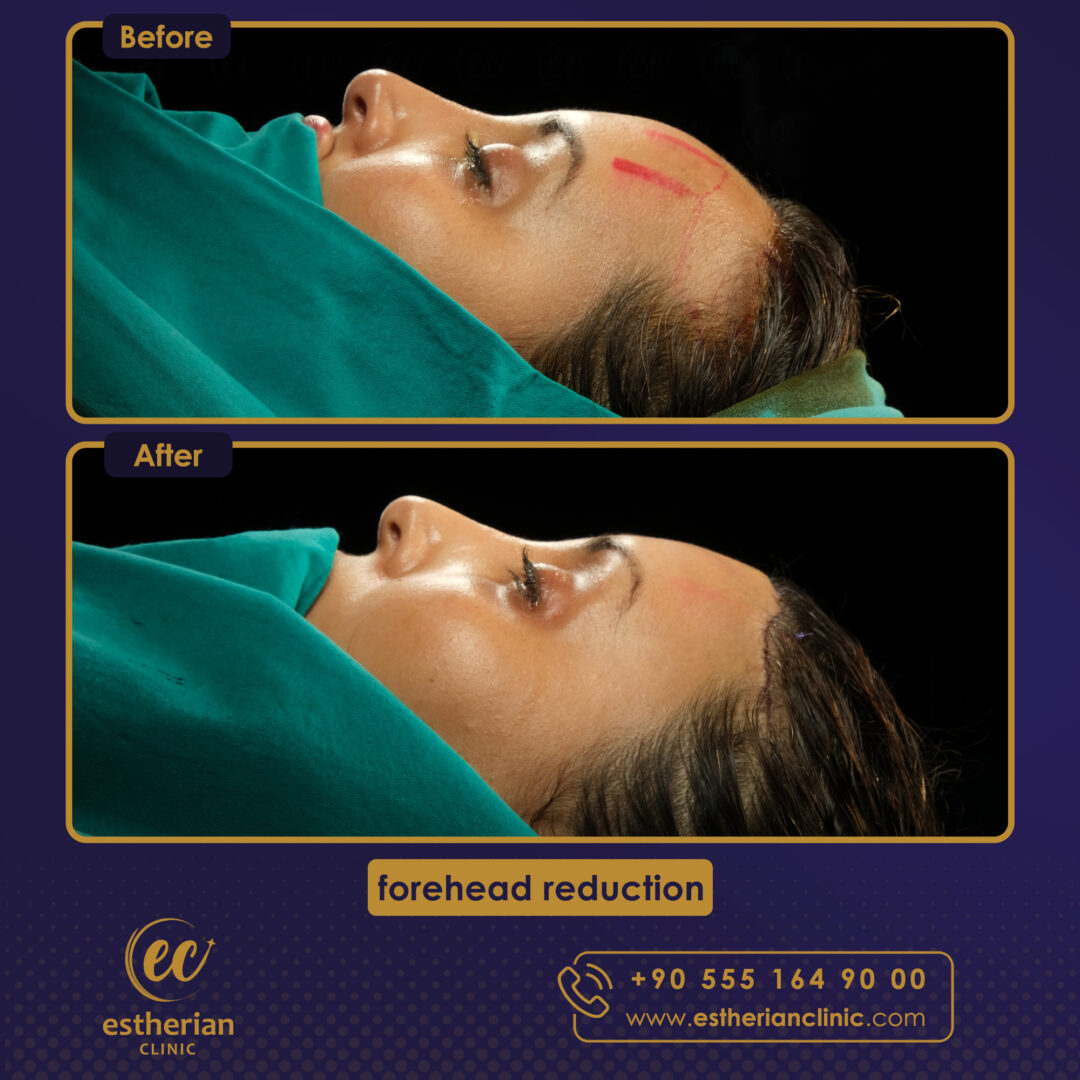
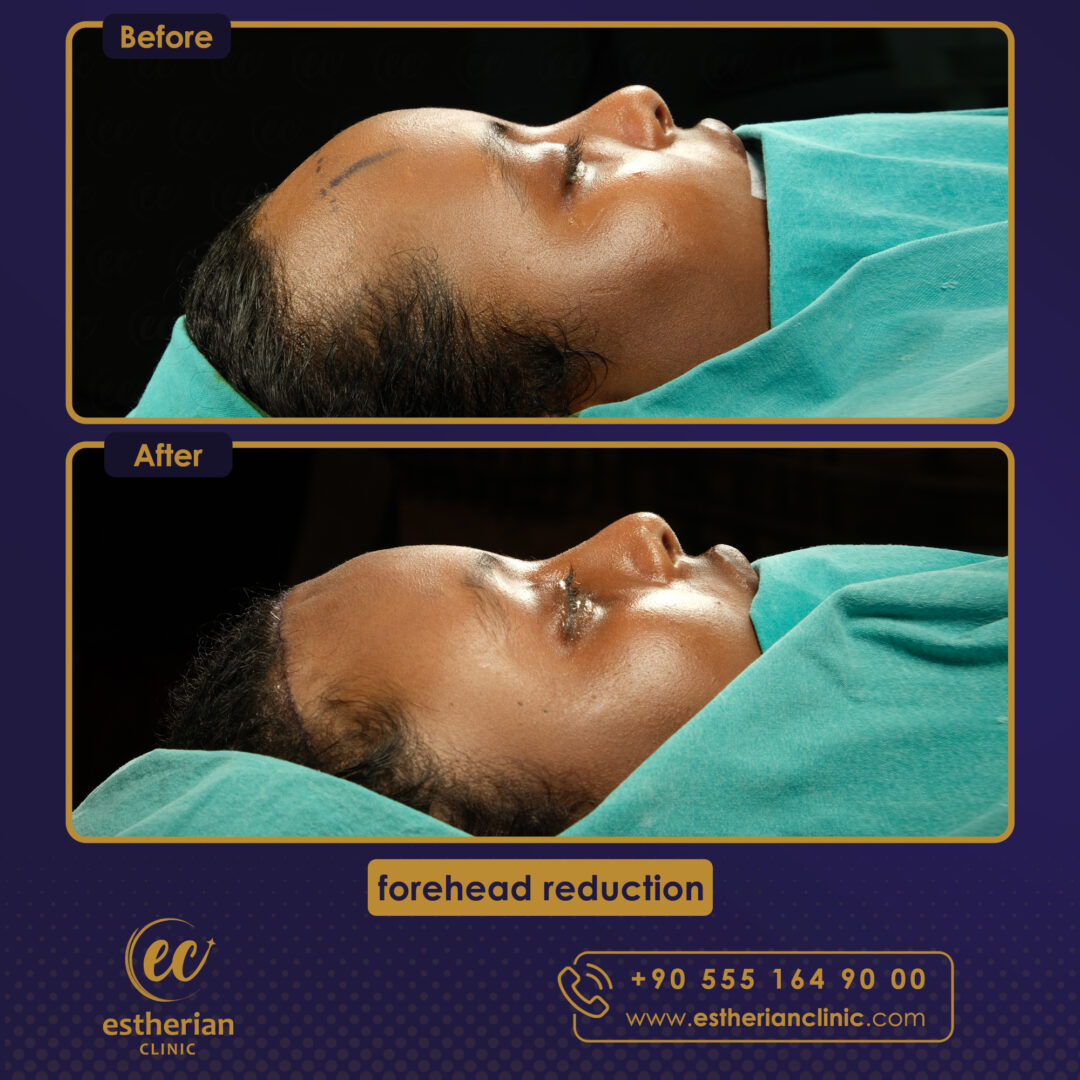
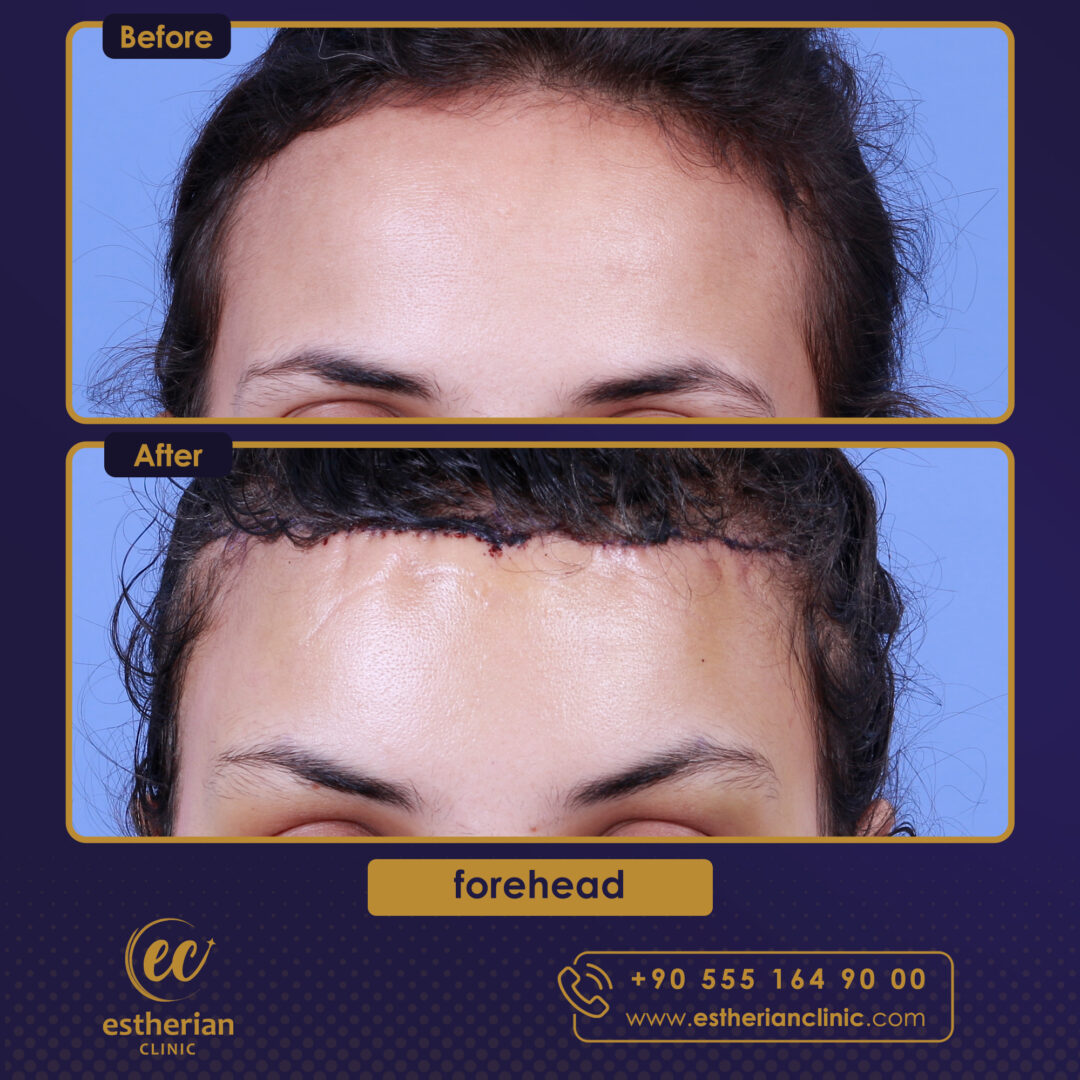
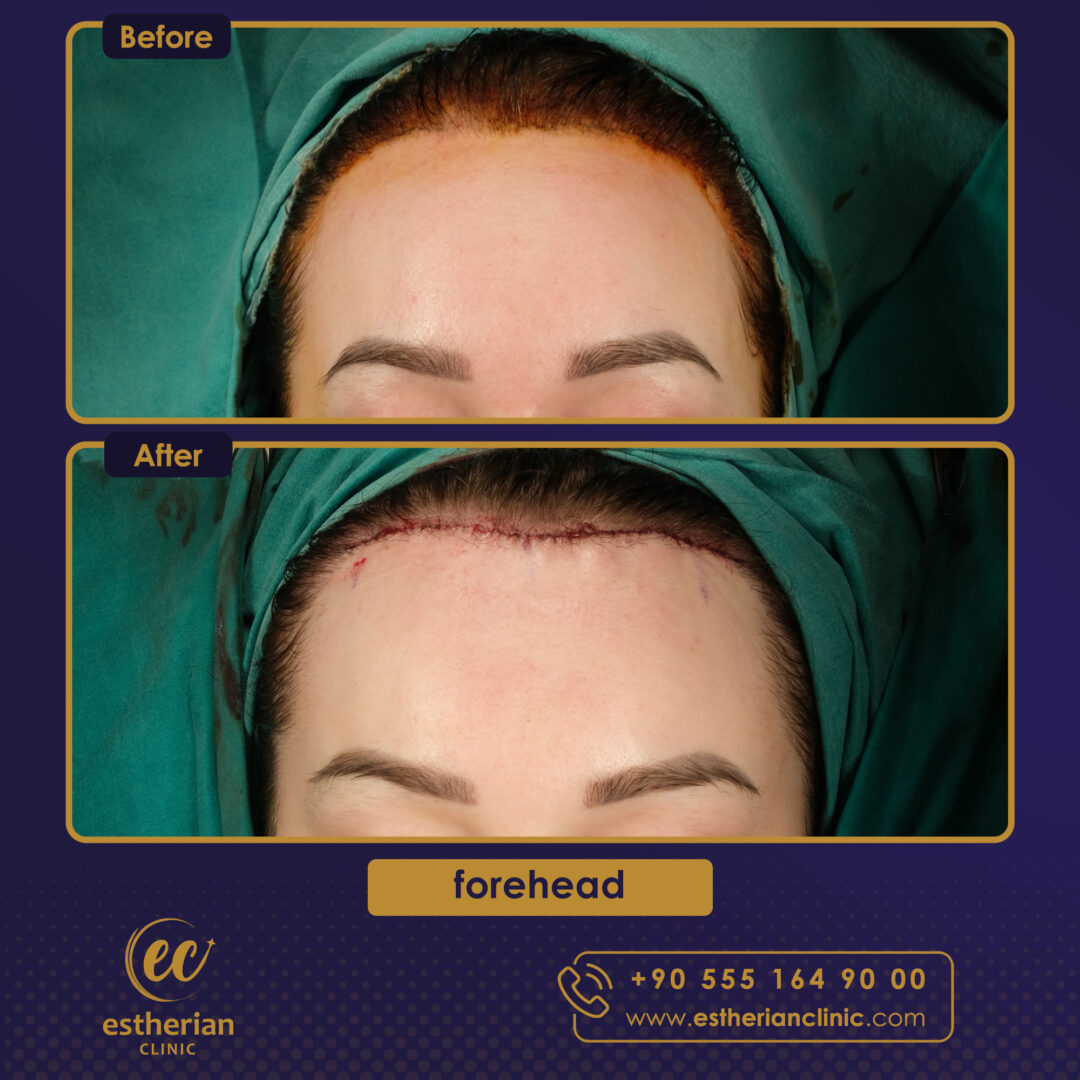
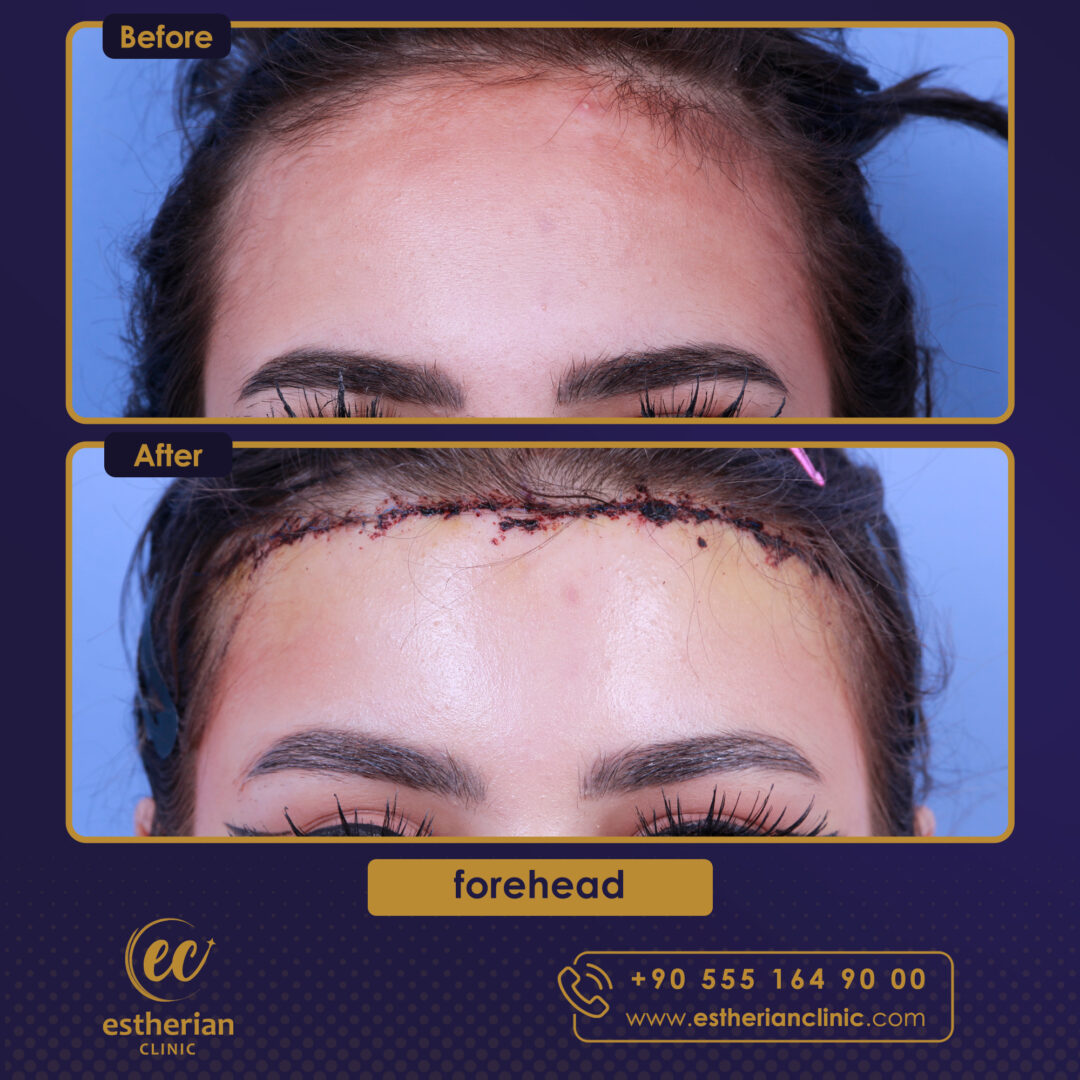
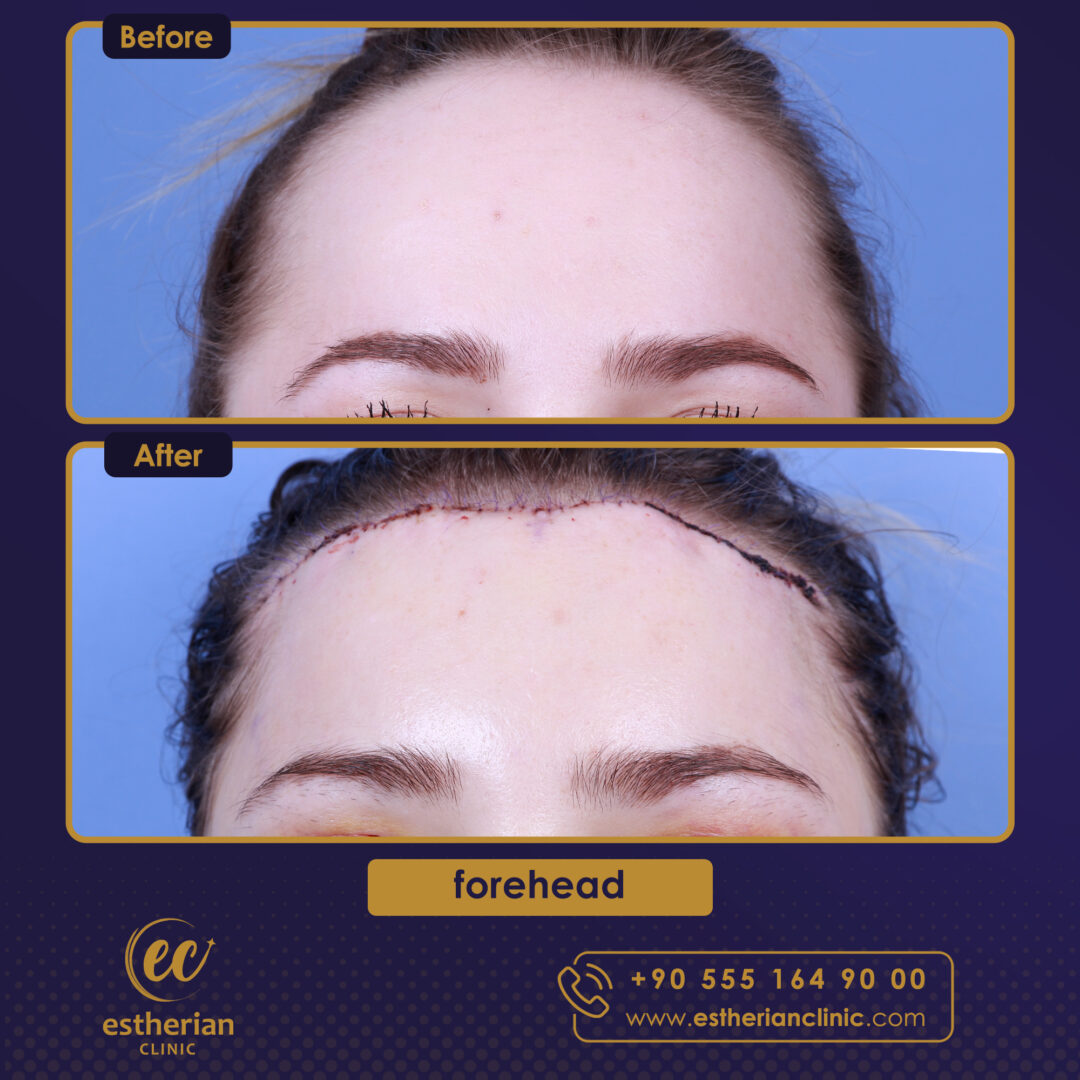
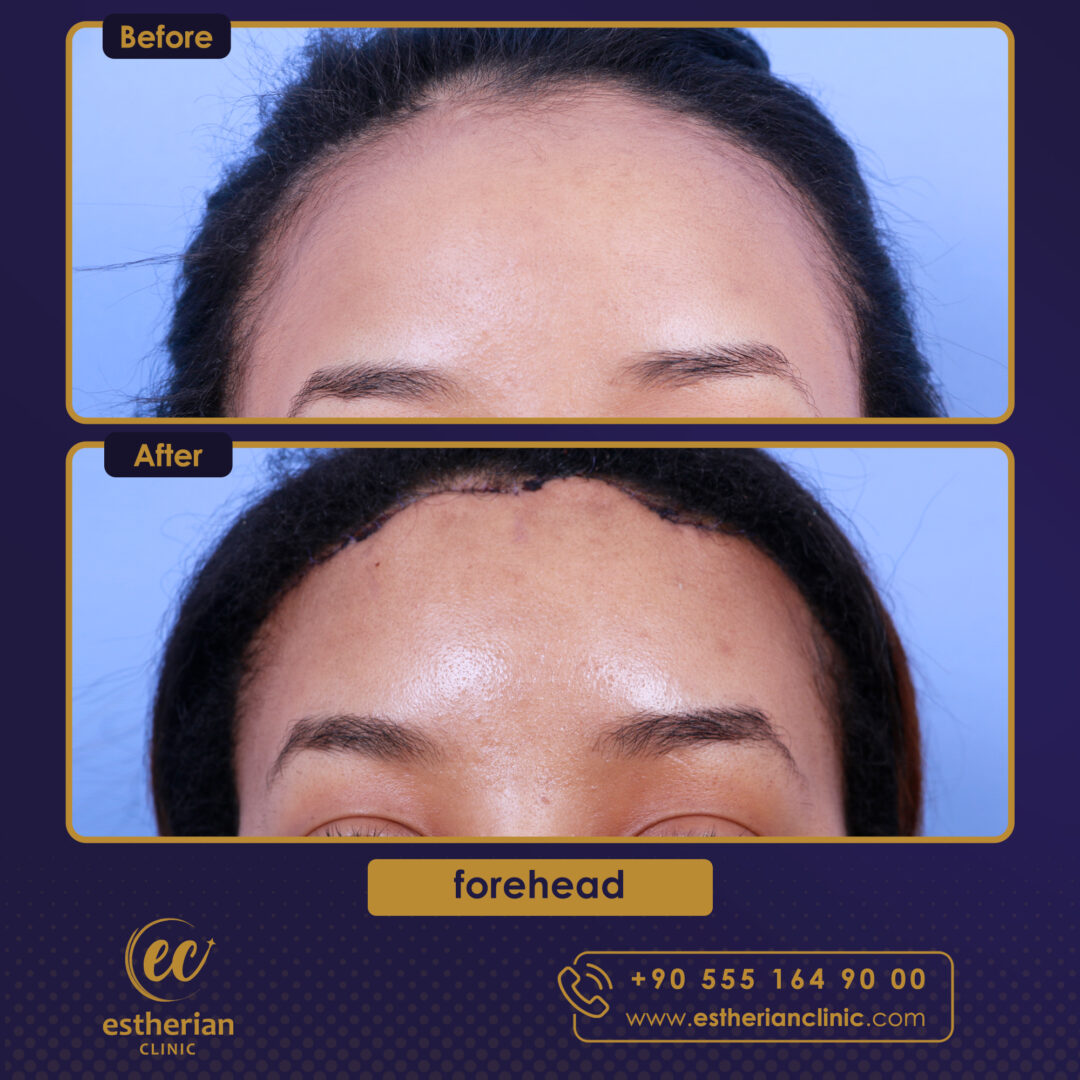
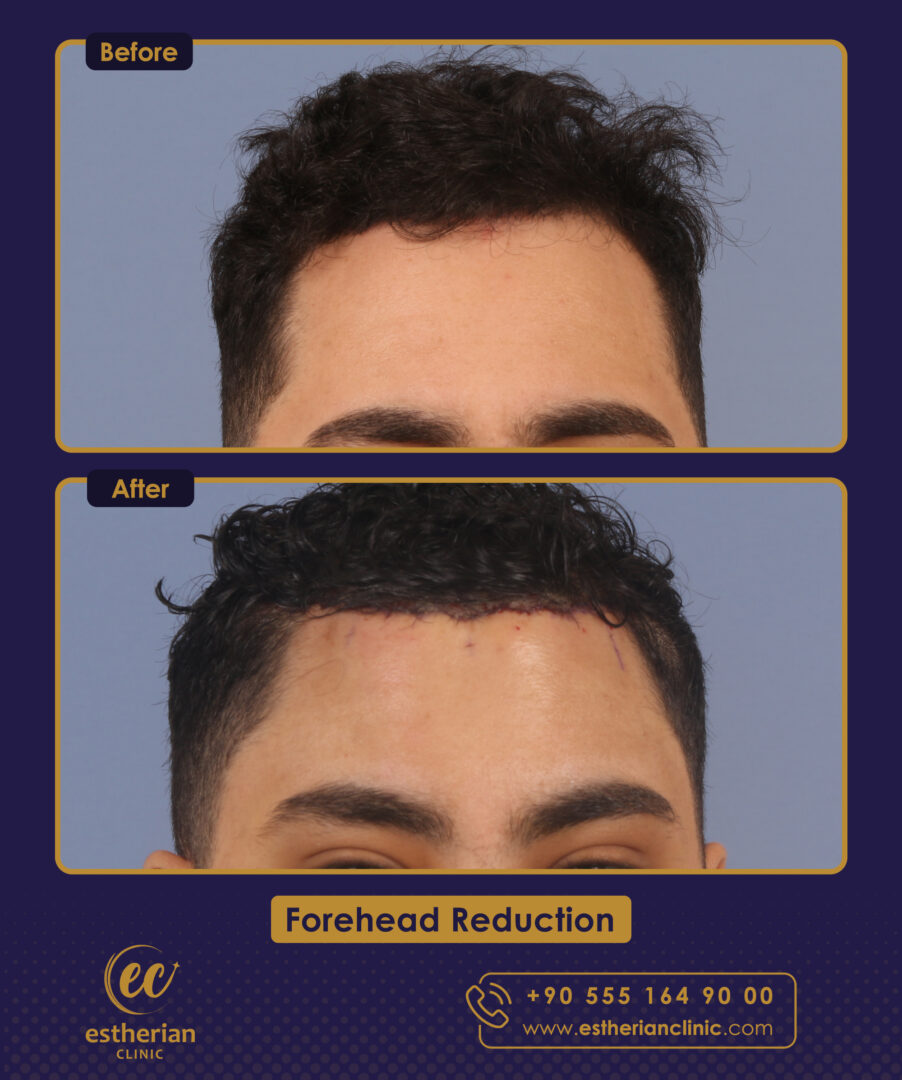
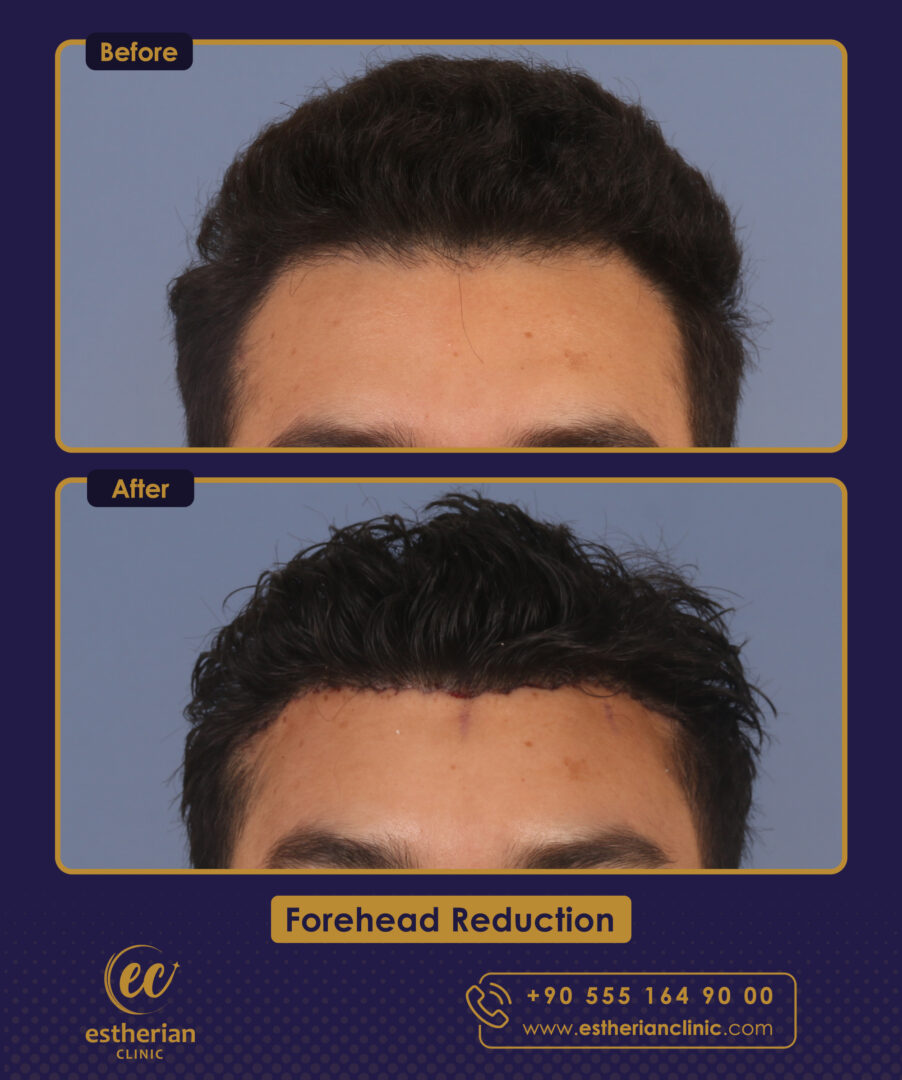
Related Articles About Hairline Lowering Surgery
Hairline-lowering surgery, or forehead reduction, is a procedure that moves the hairline. This helps create a more balanced look for the face. This technique is often utilized in facial feminization surgeries to create a lower, more traditionally feminine hairline. For more information: https://www.mayoclinic.org/tests-procedures/facial-feminization-surgery/about/pac-20467962
The success of hairline lowering depends a lot on scalp laxity. Scalp laxity is the flexibility of the scalp. It decides how much the hairline can be moved forward. In cases where scalp laxity is insufficient, tissue expanders may be employed to facilitate greater advancement. https://en.wikipedia.org/wiki/Hairline_lowering
It’s important to know that hairline lowering can give quick results. However, it may cause scarring and temporary hair thinning. In some instances, hair transplants may be considered as an alternative or supplementary treatment to achieve the desired outcome. https://en.wikipedia.org/wiki/Hairline_lowering

